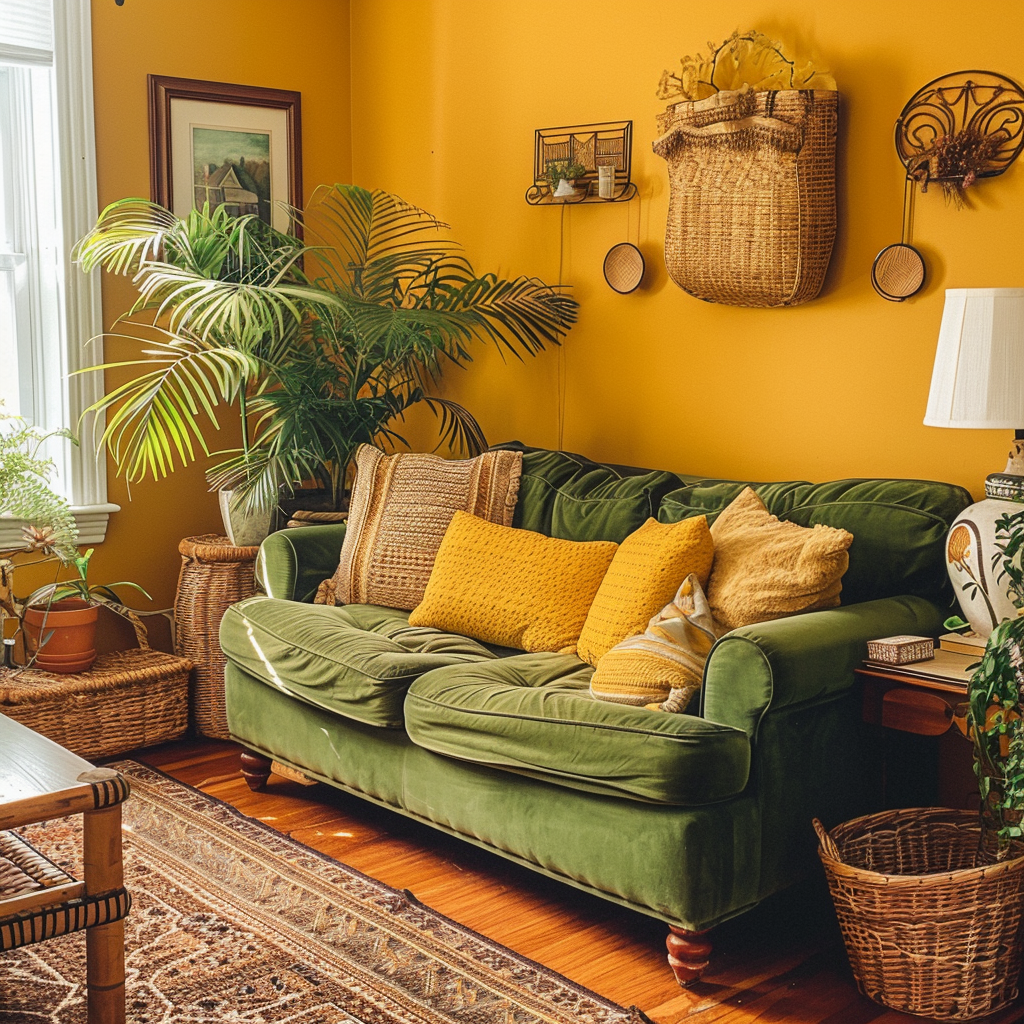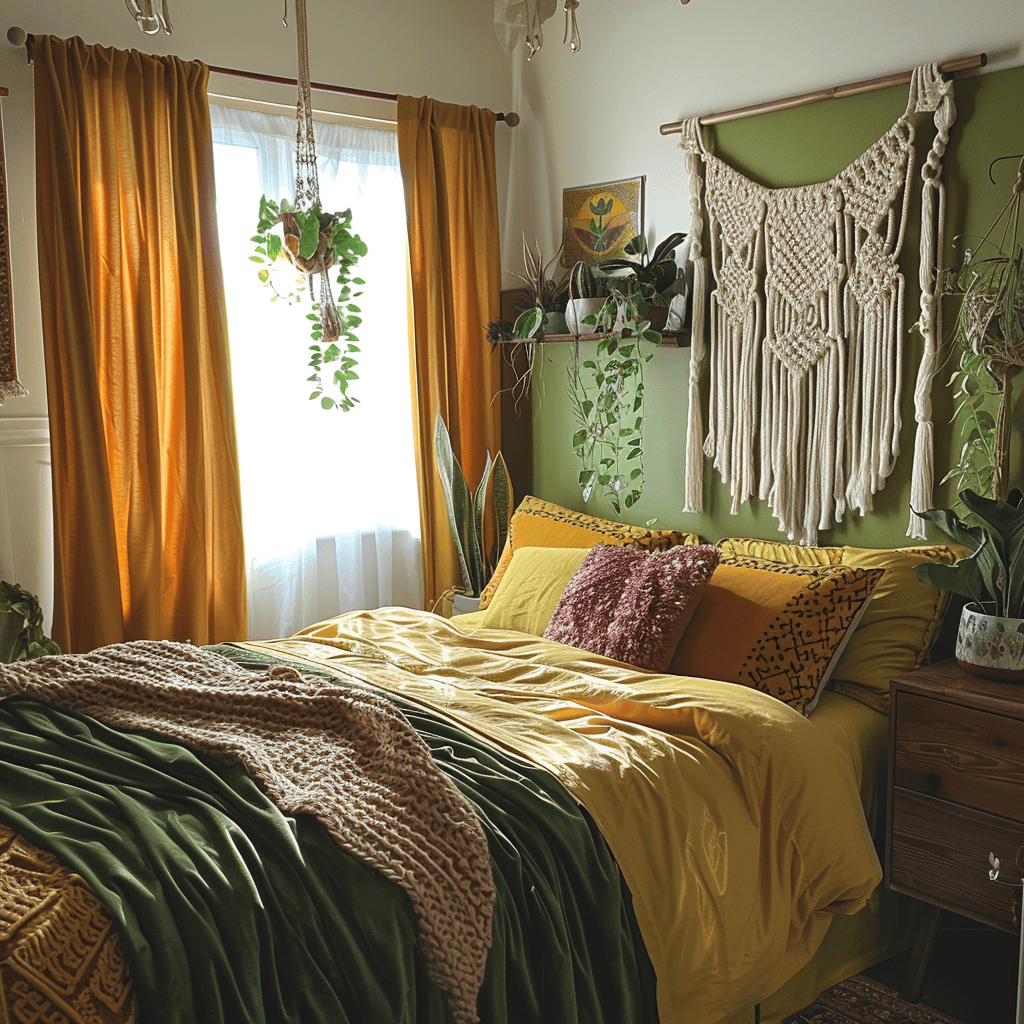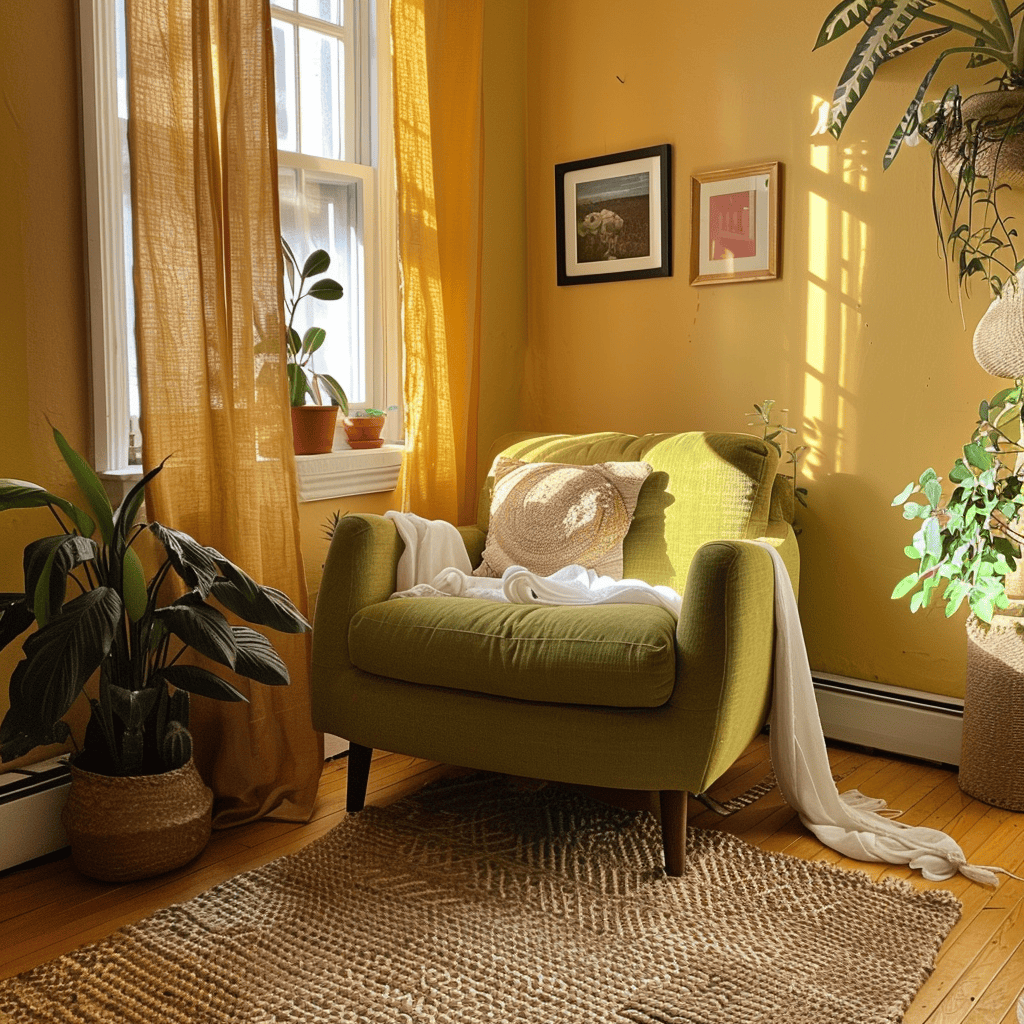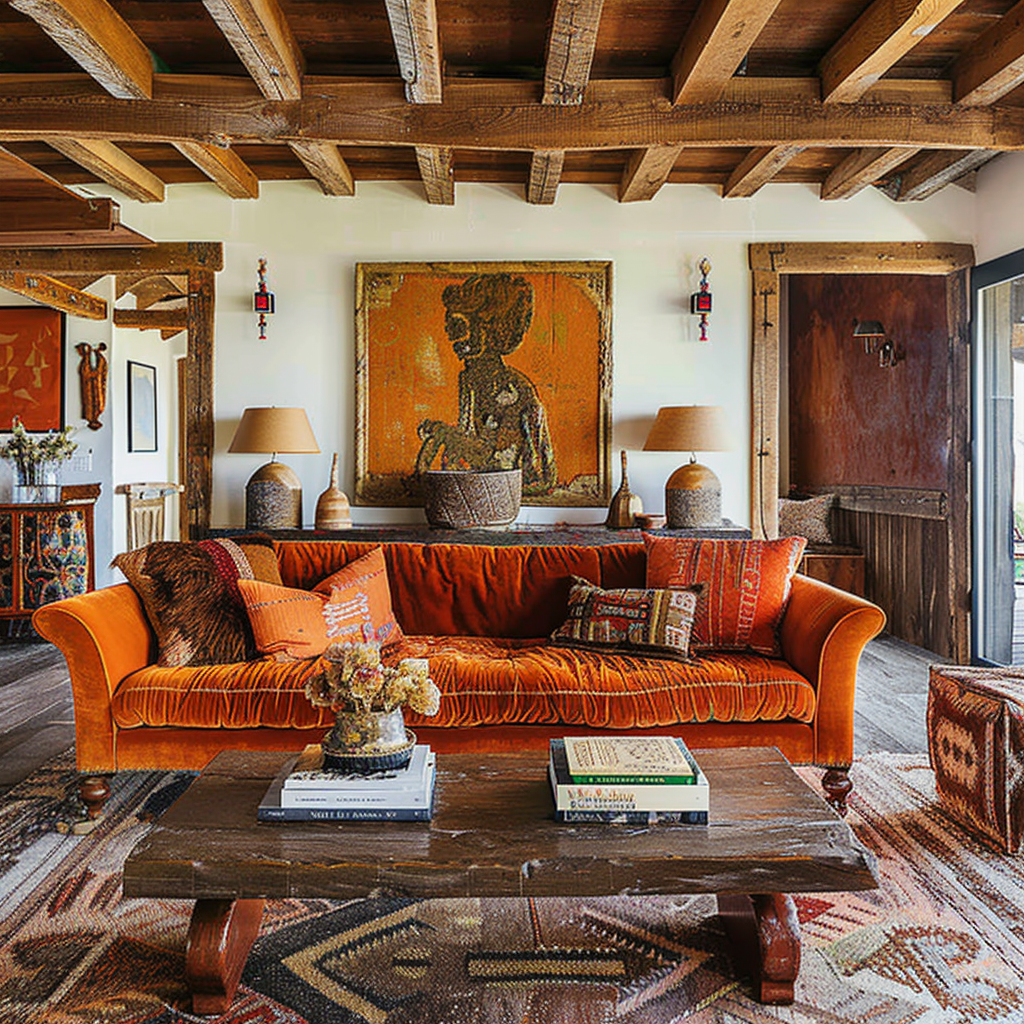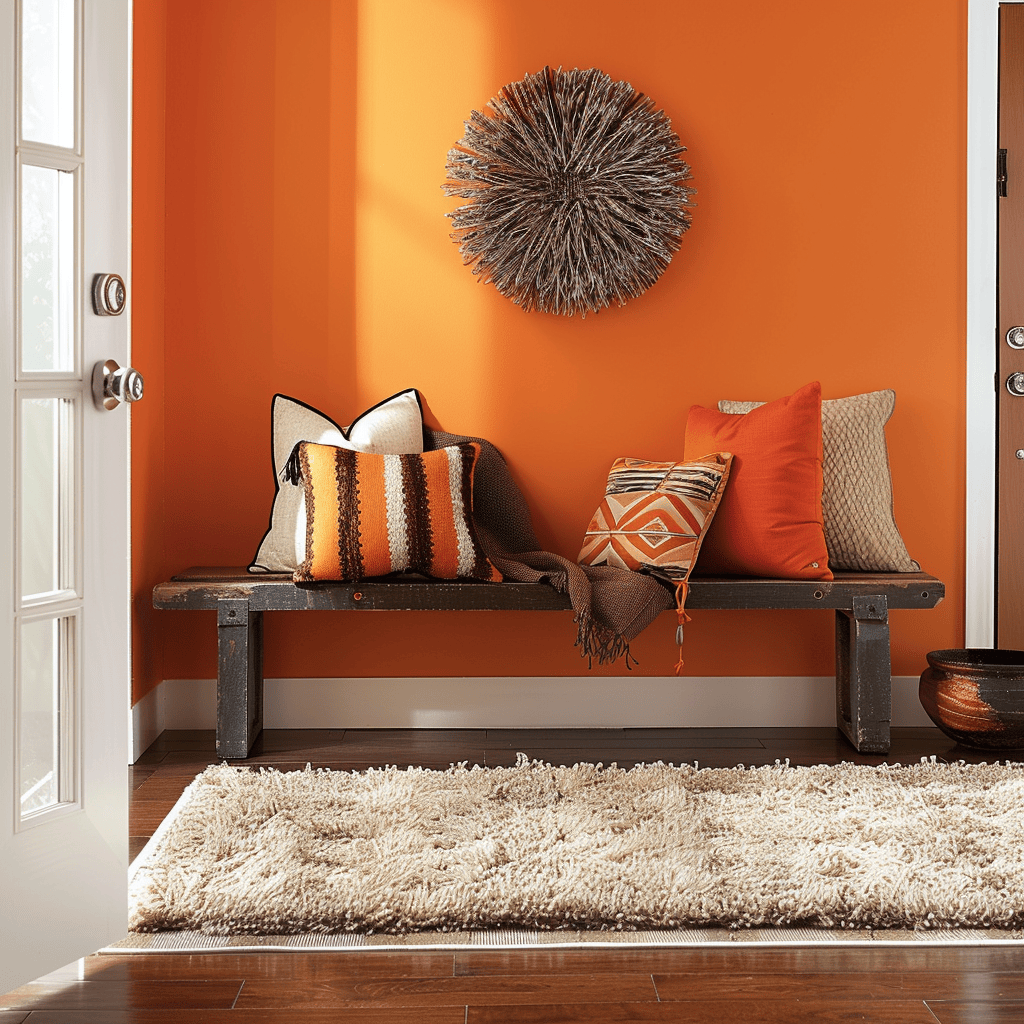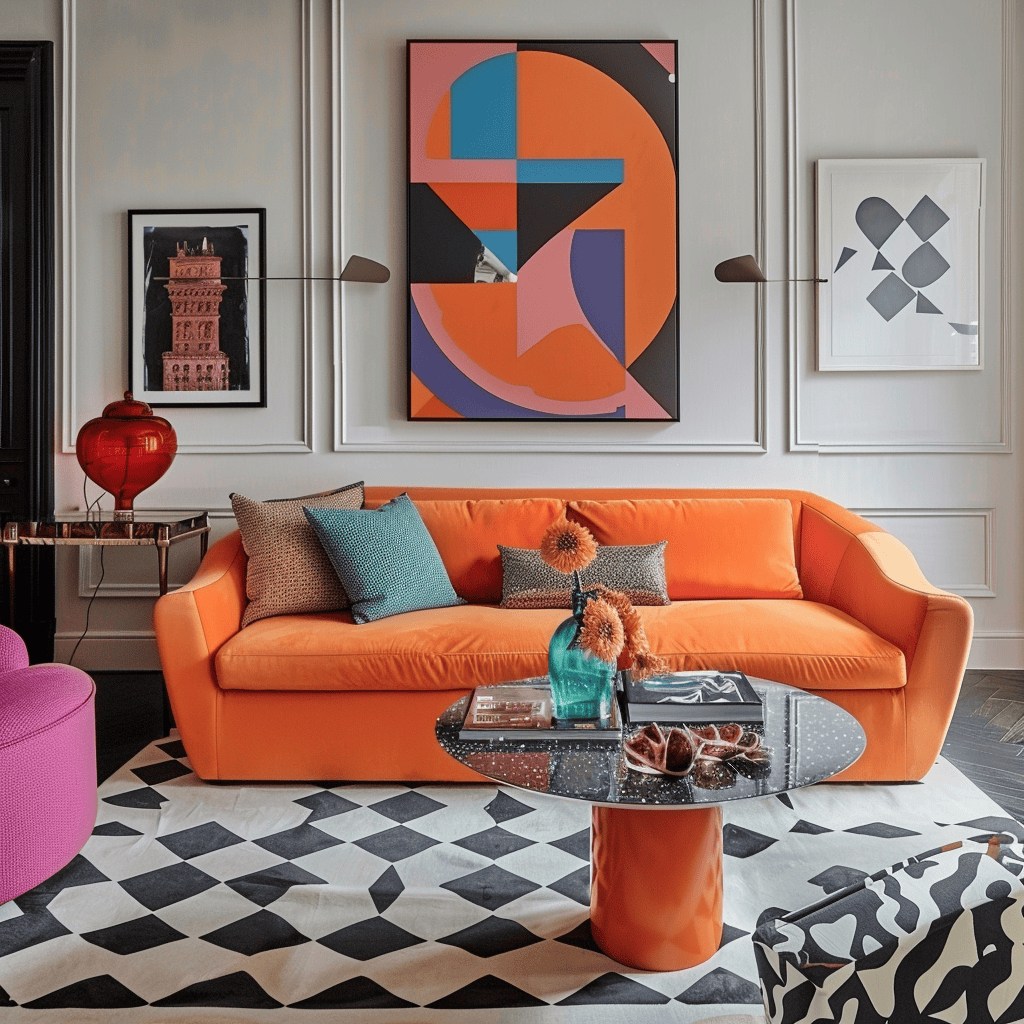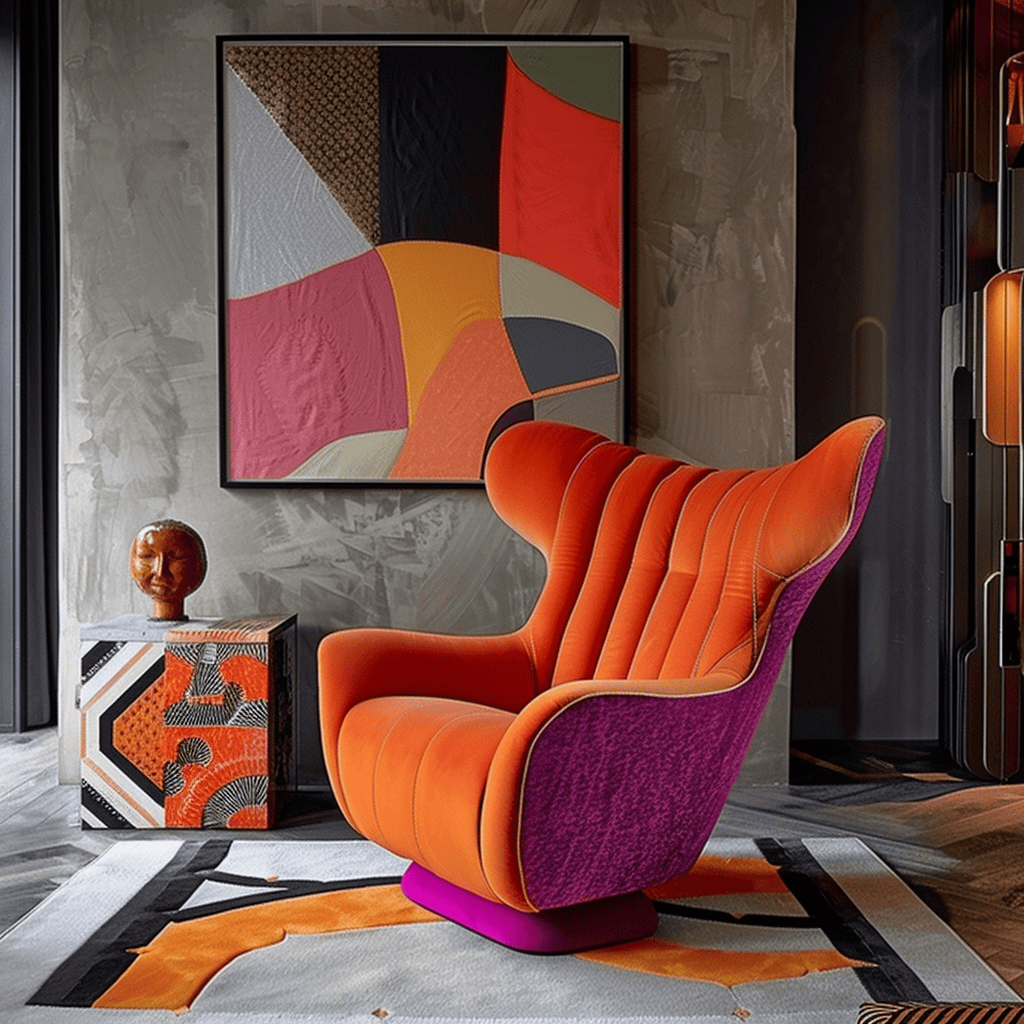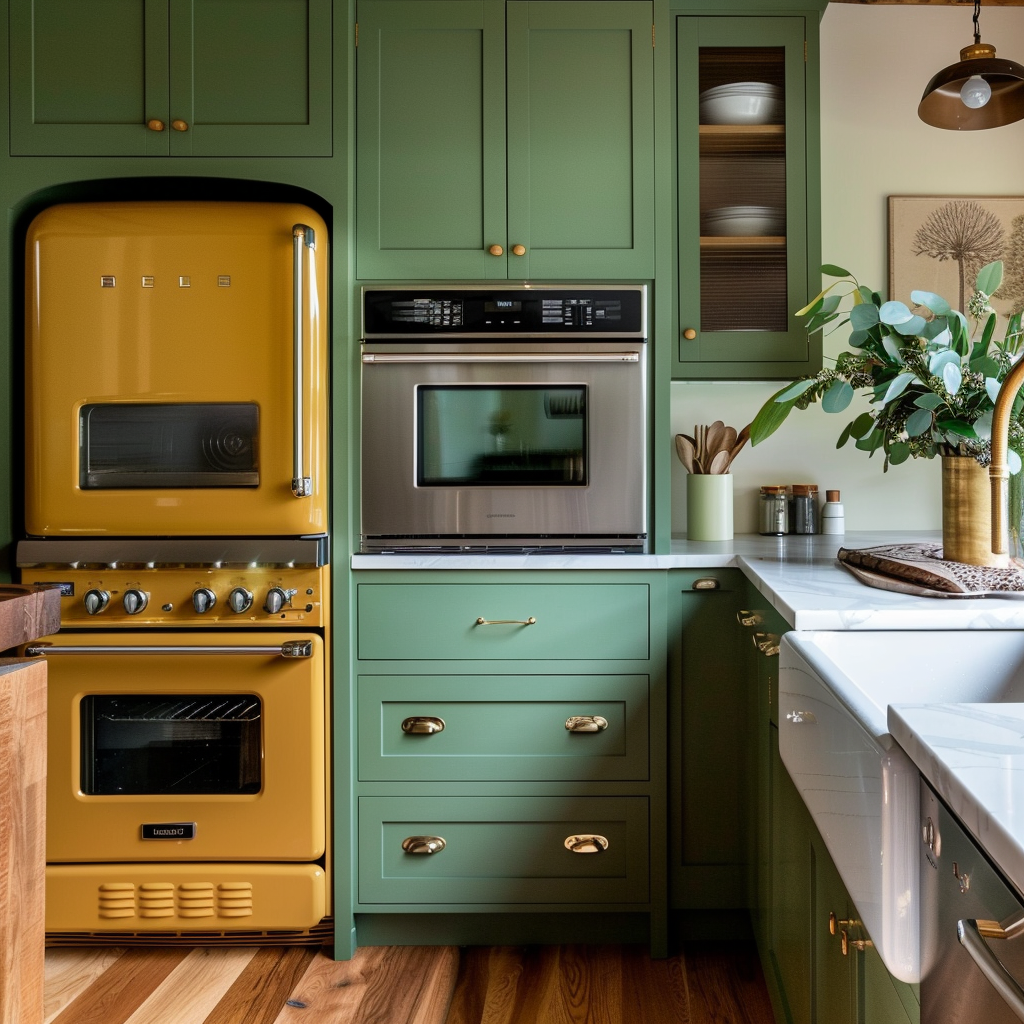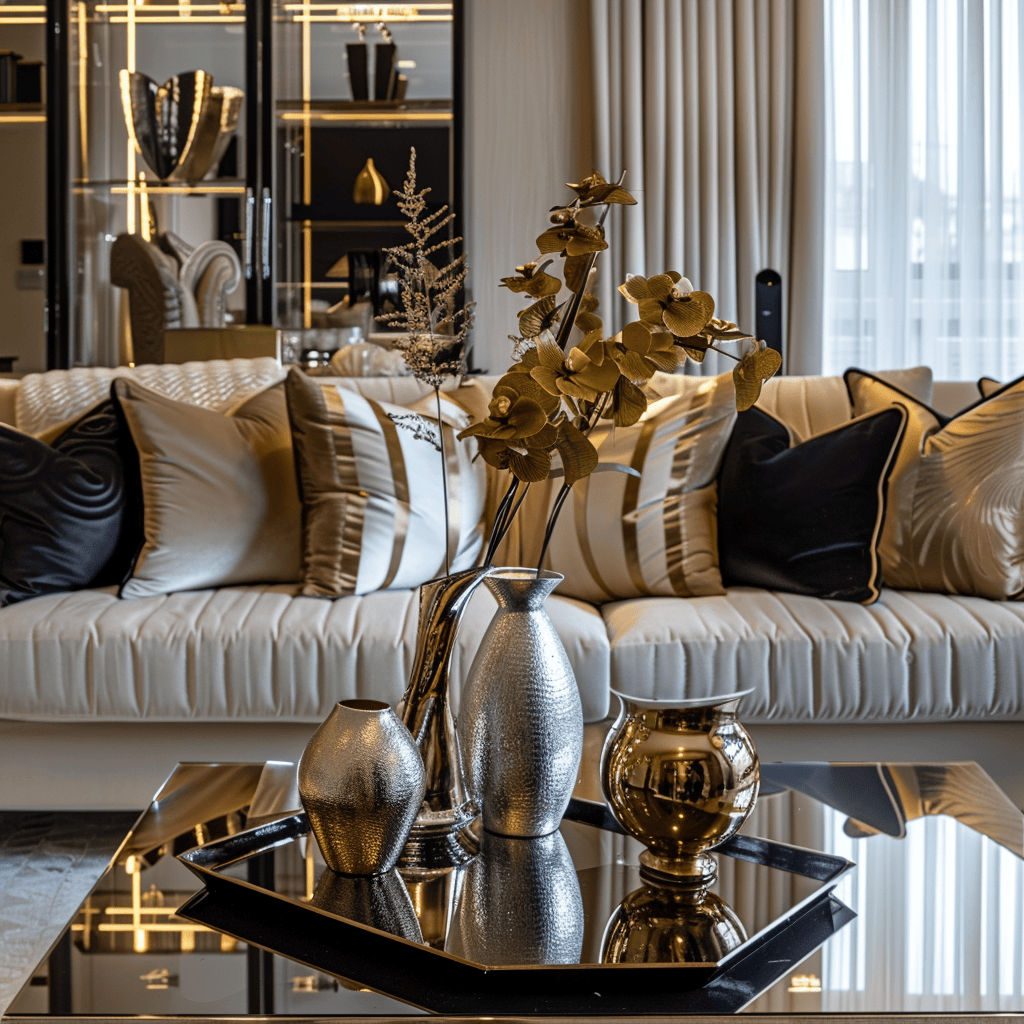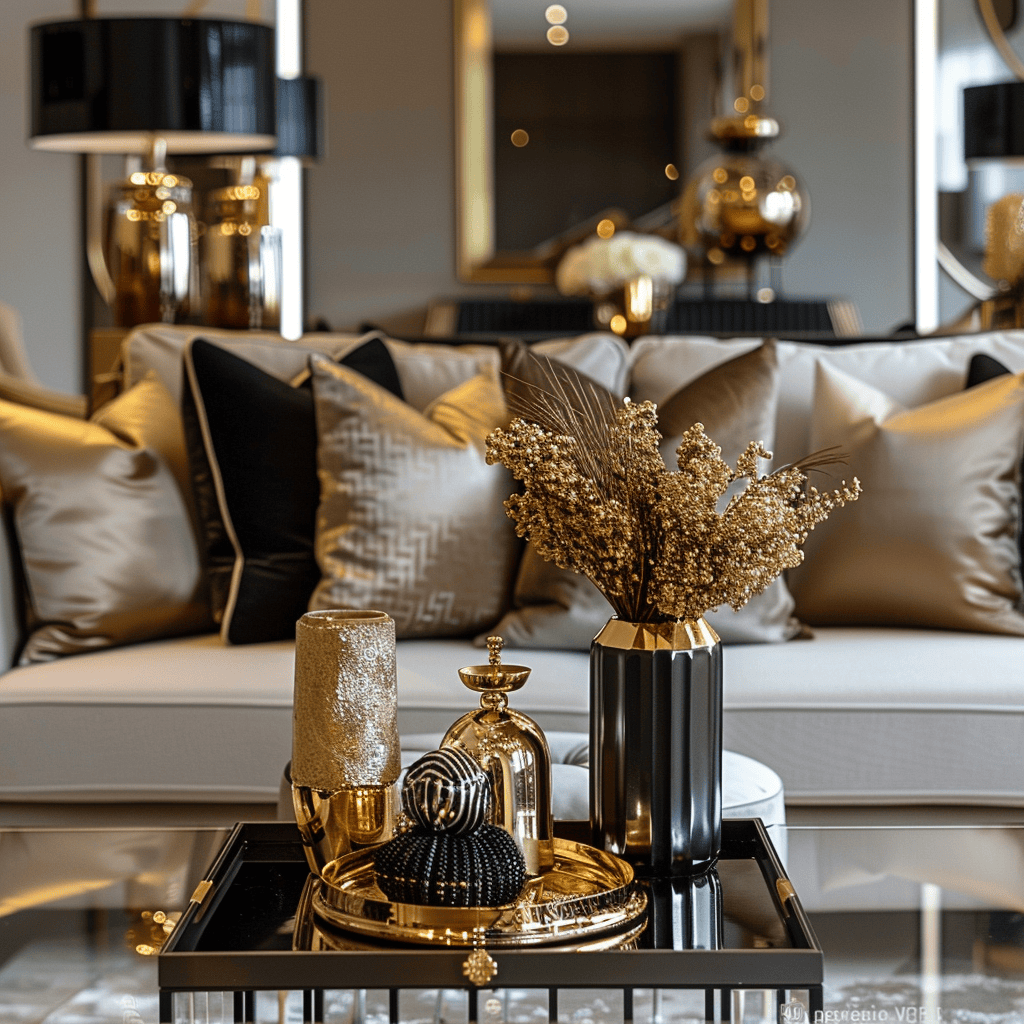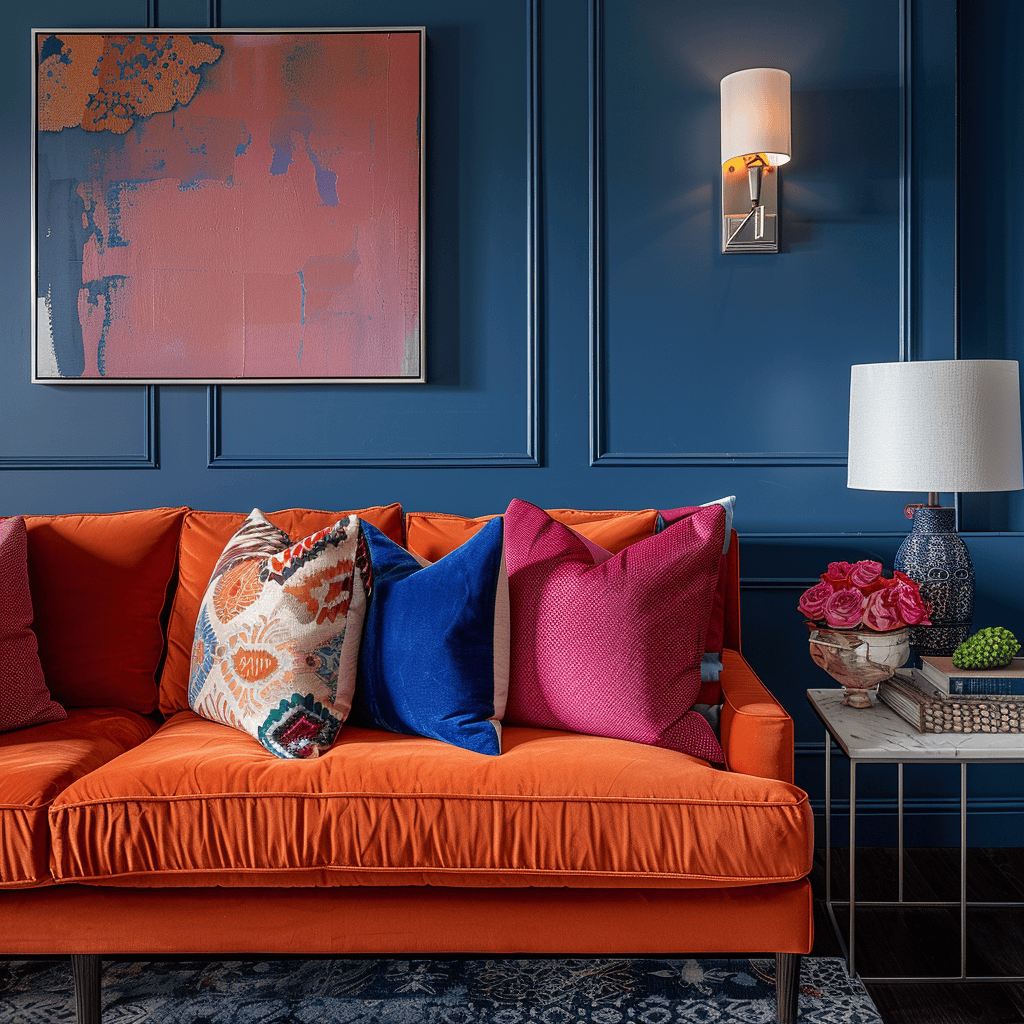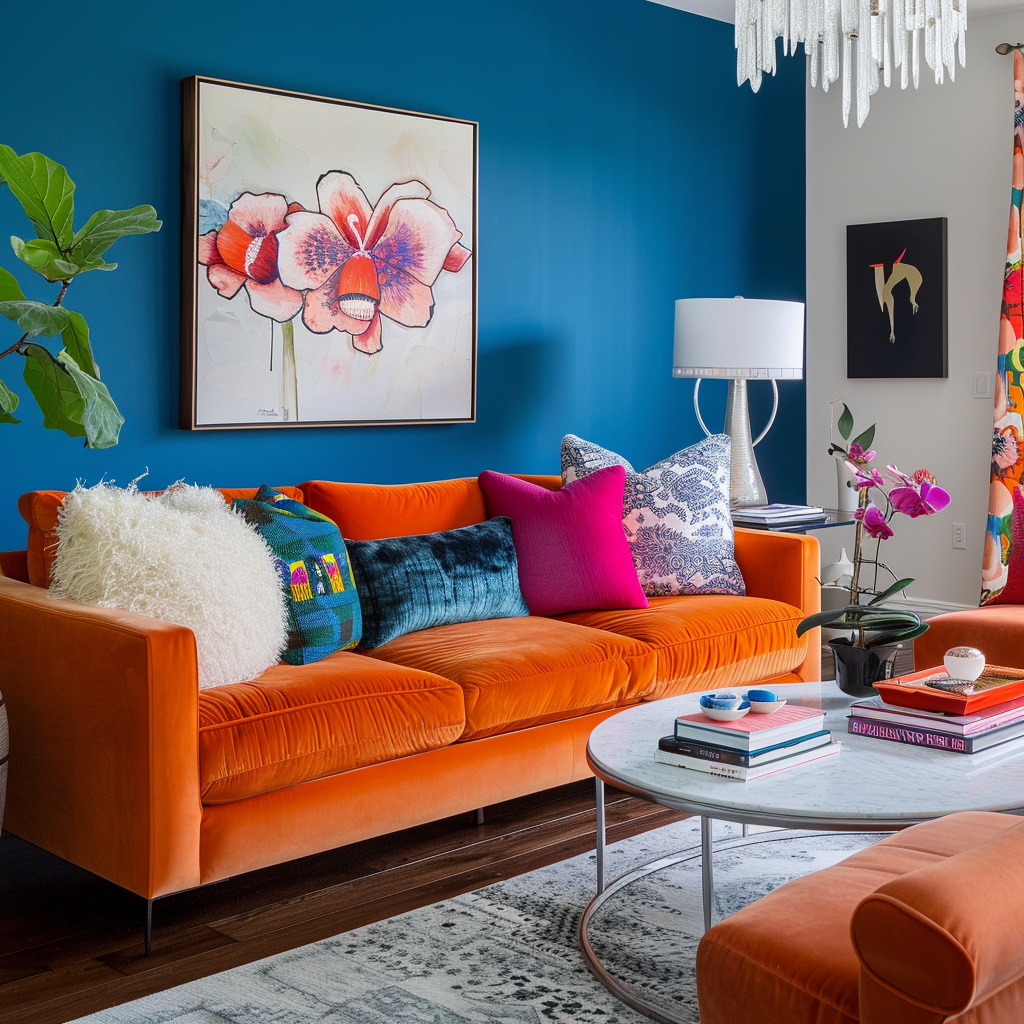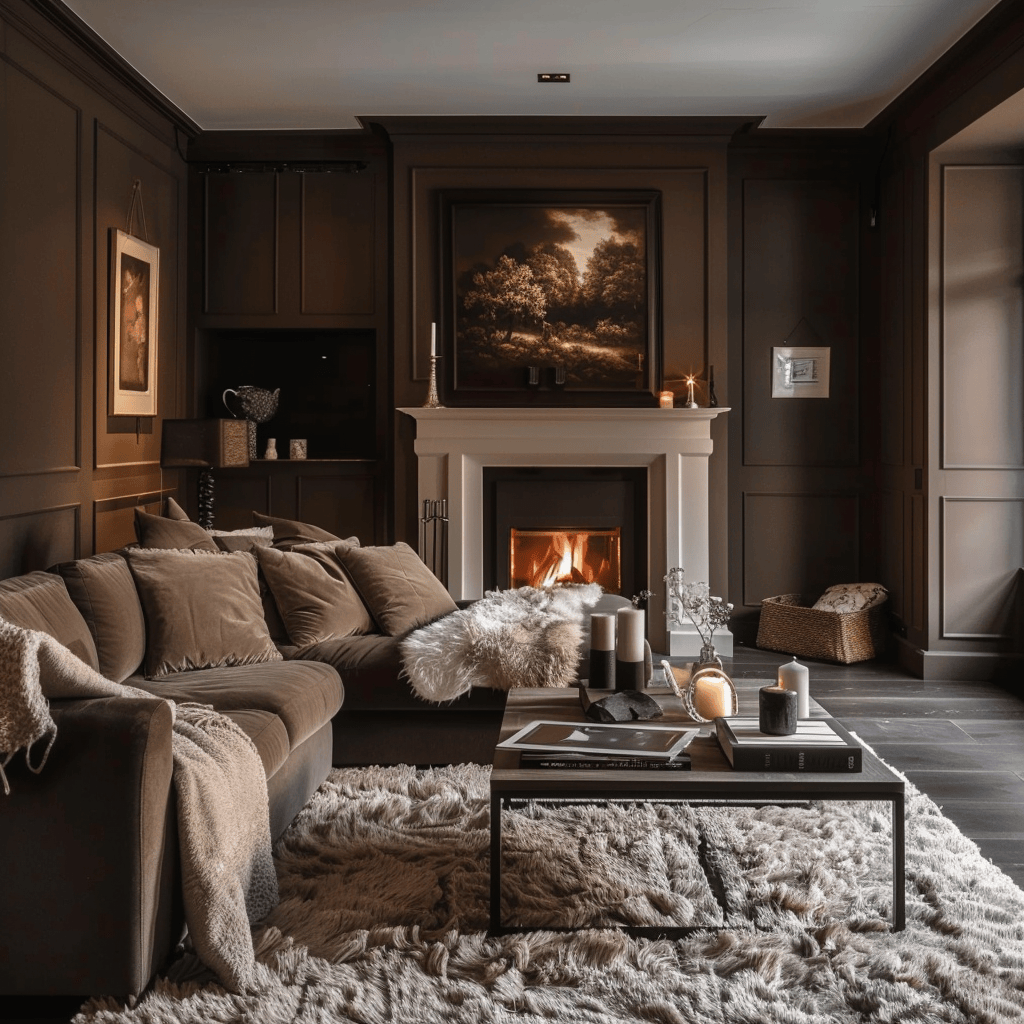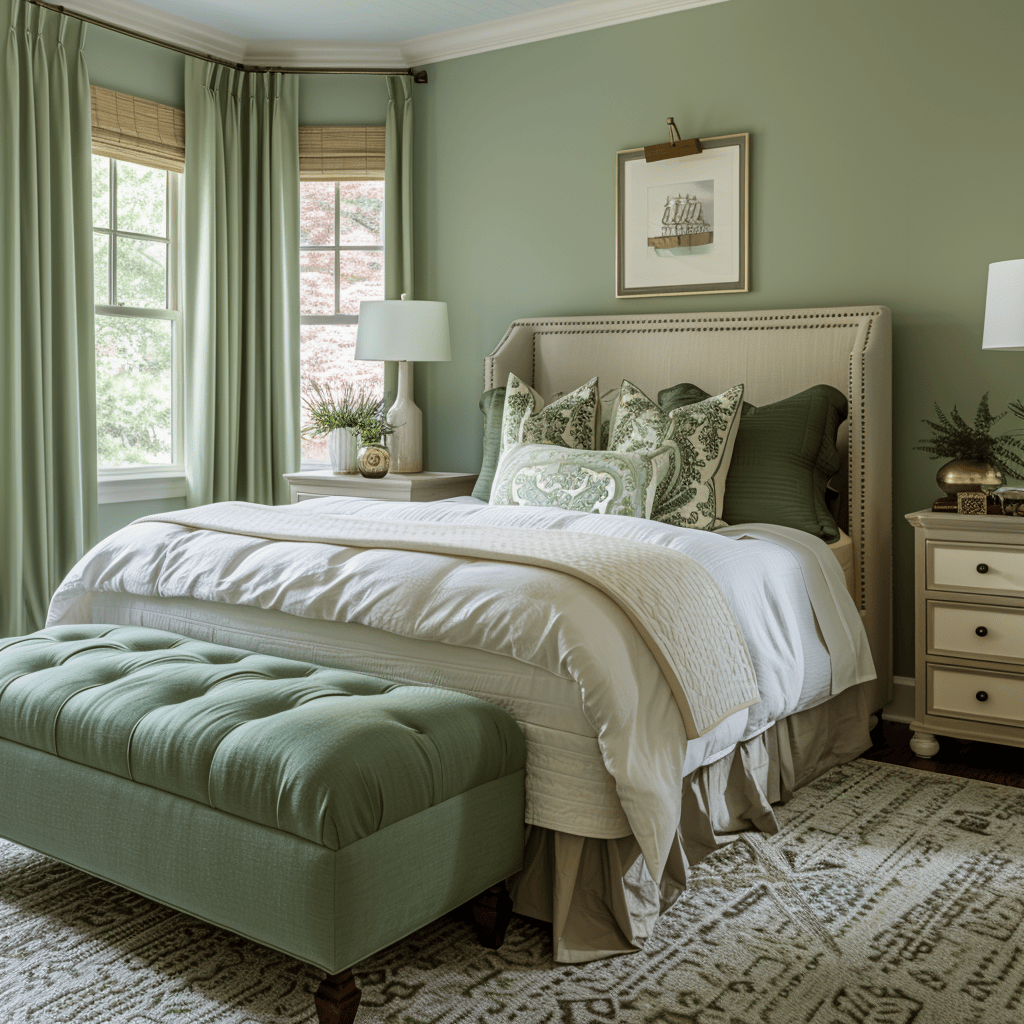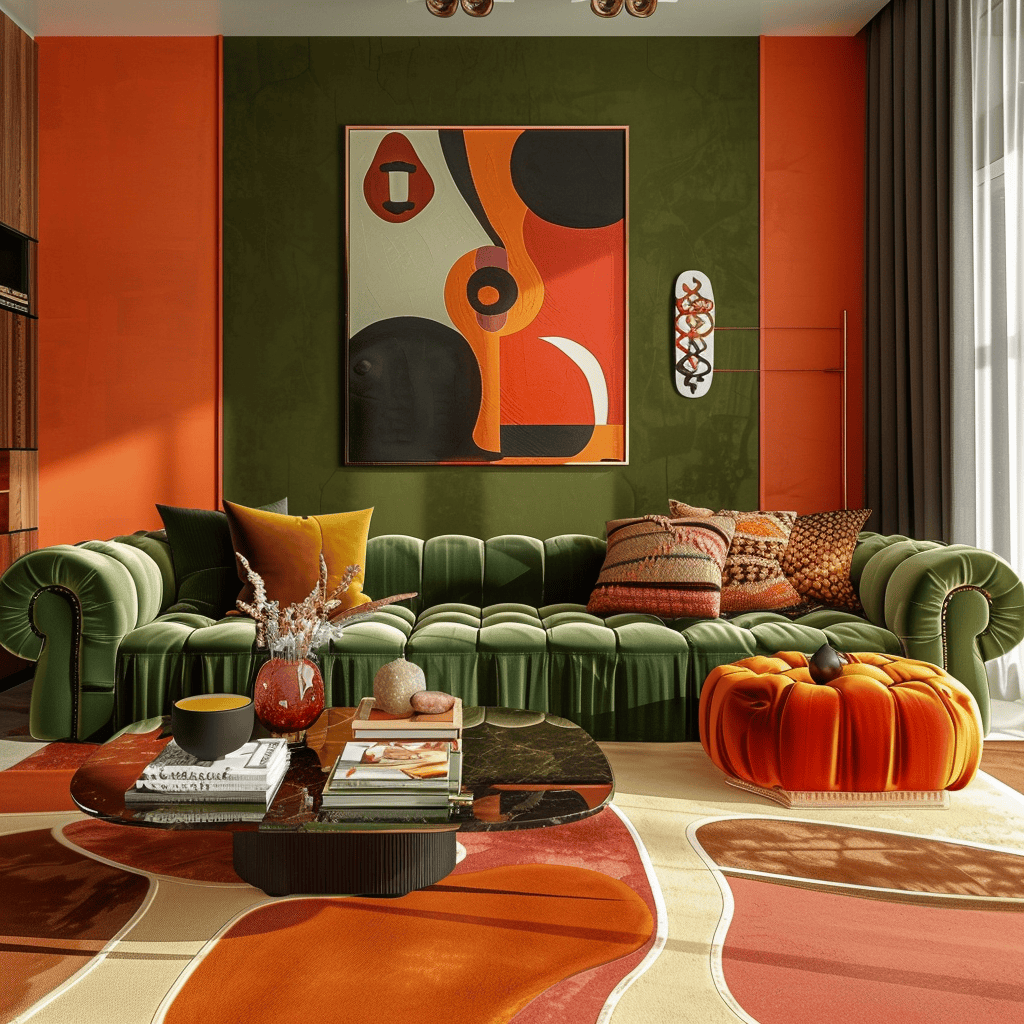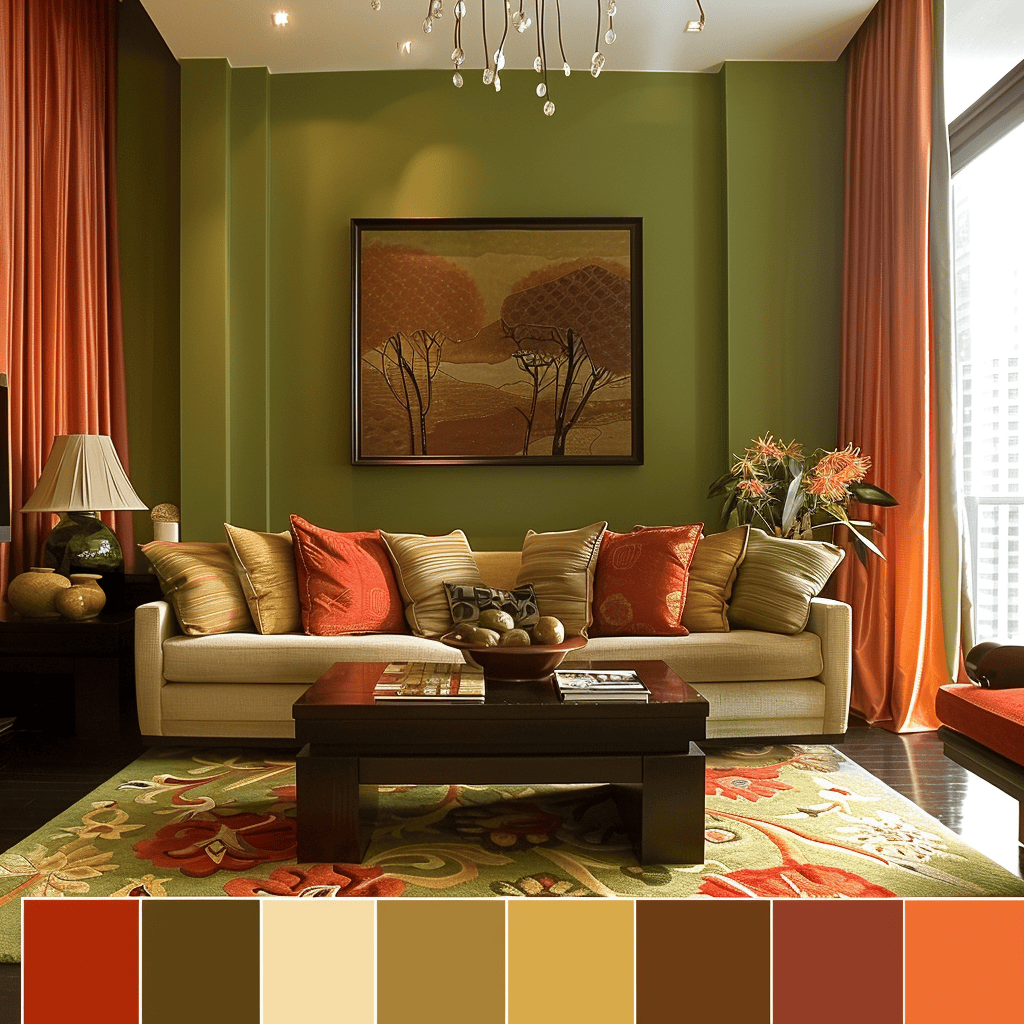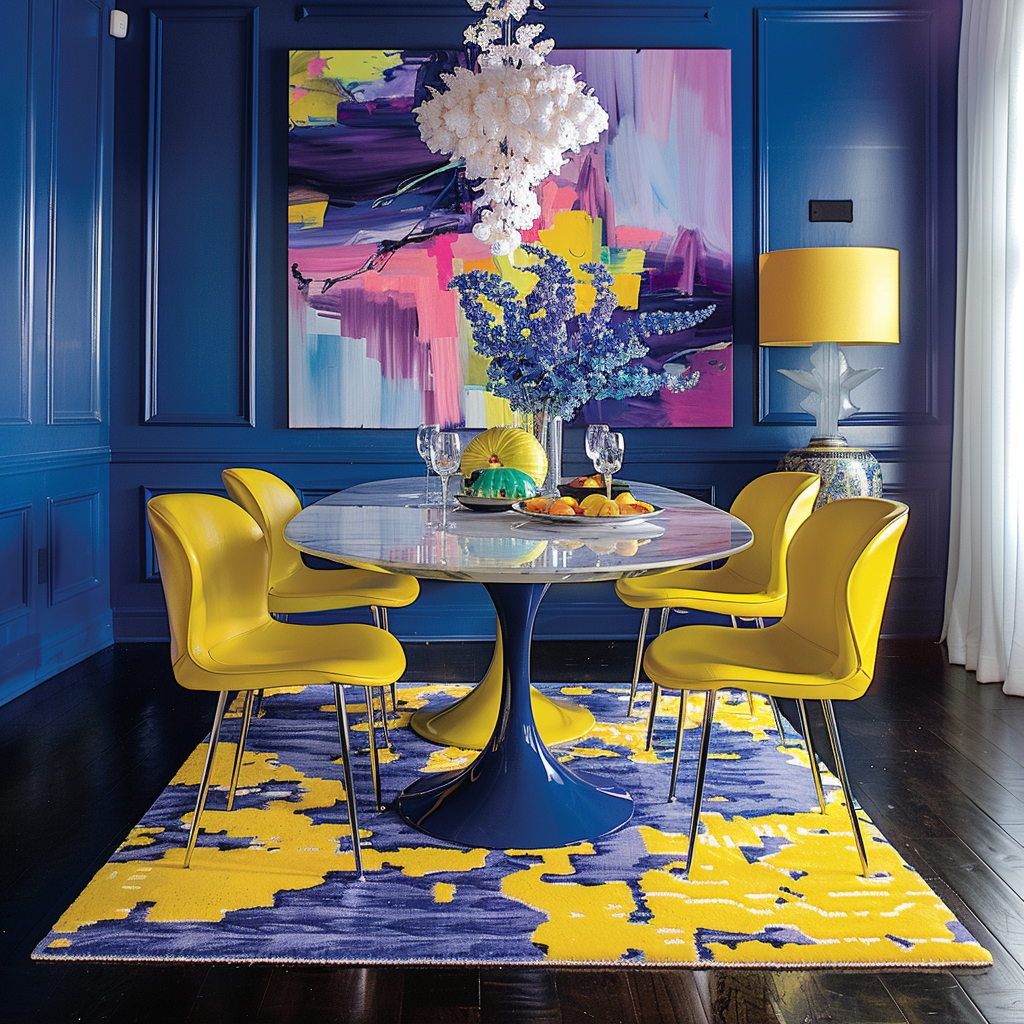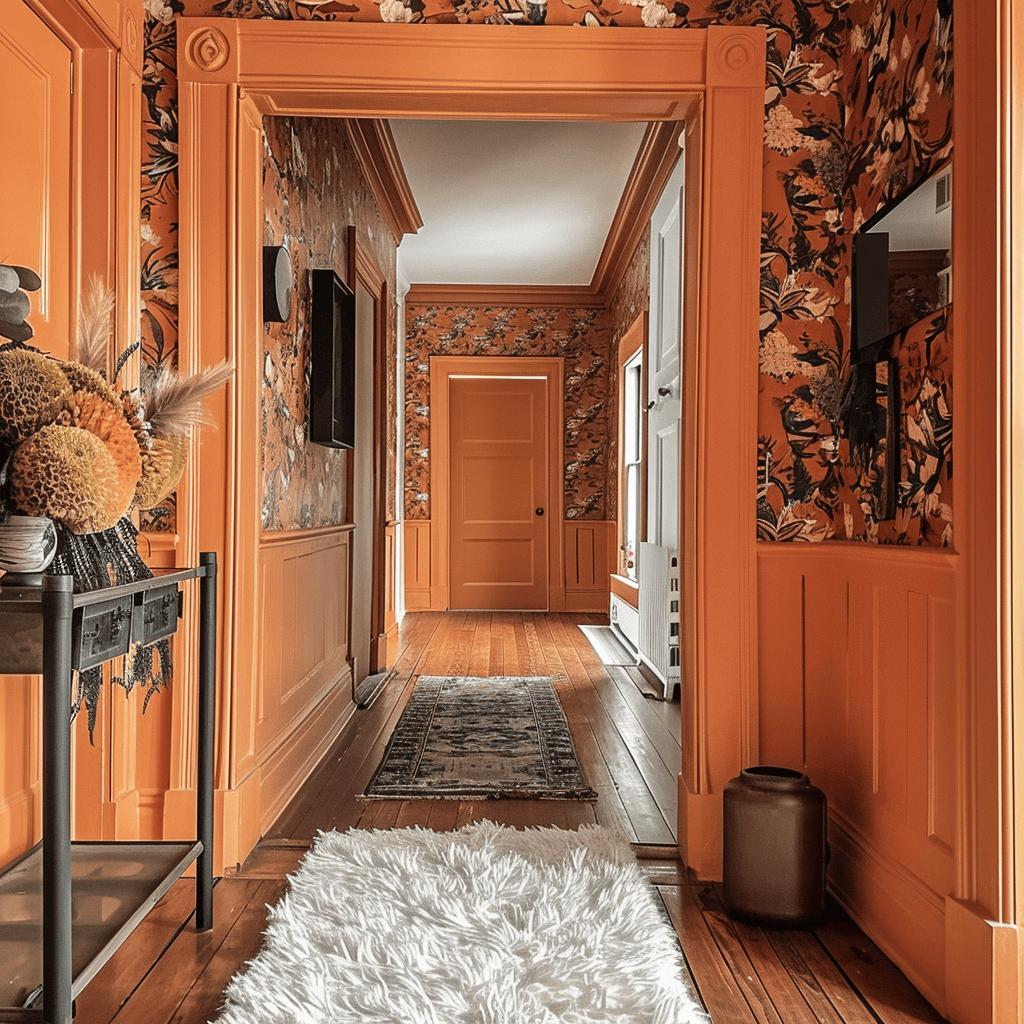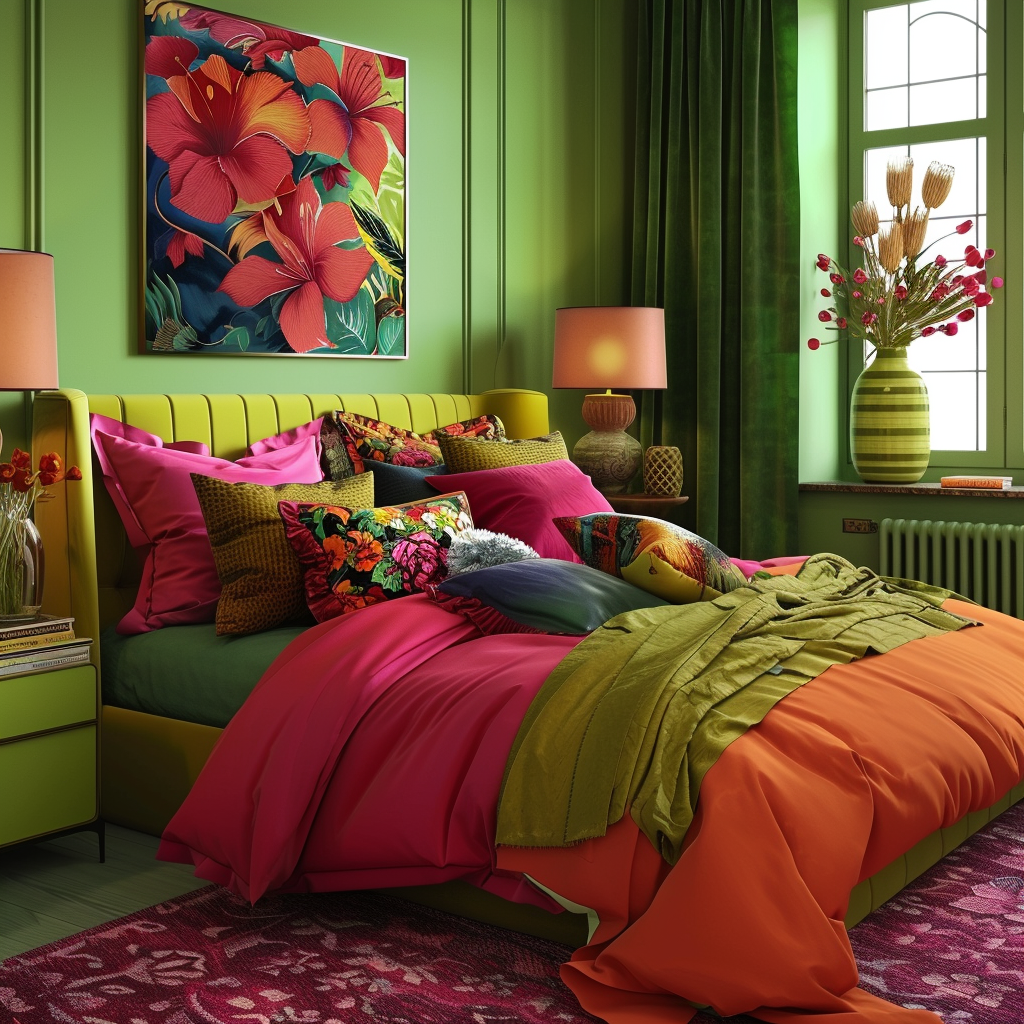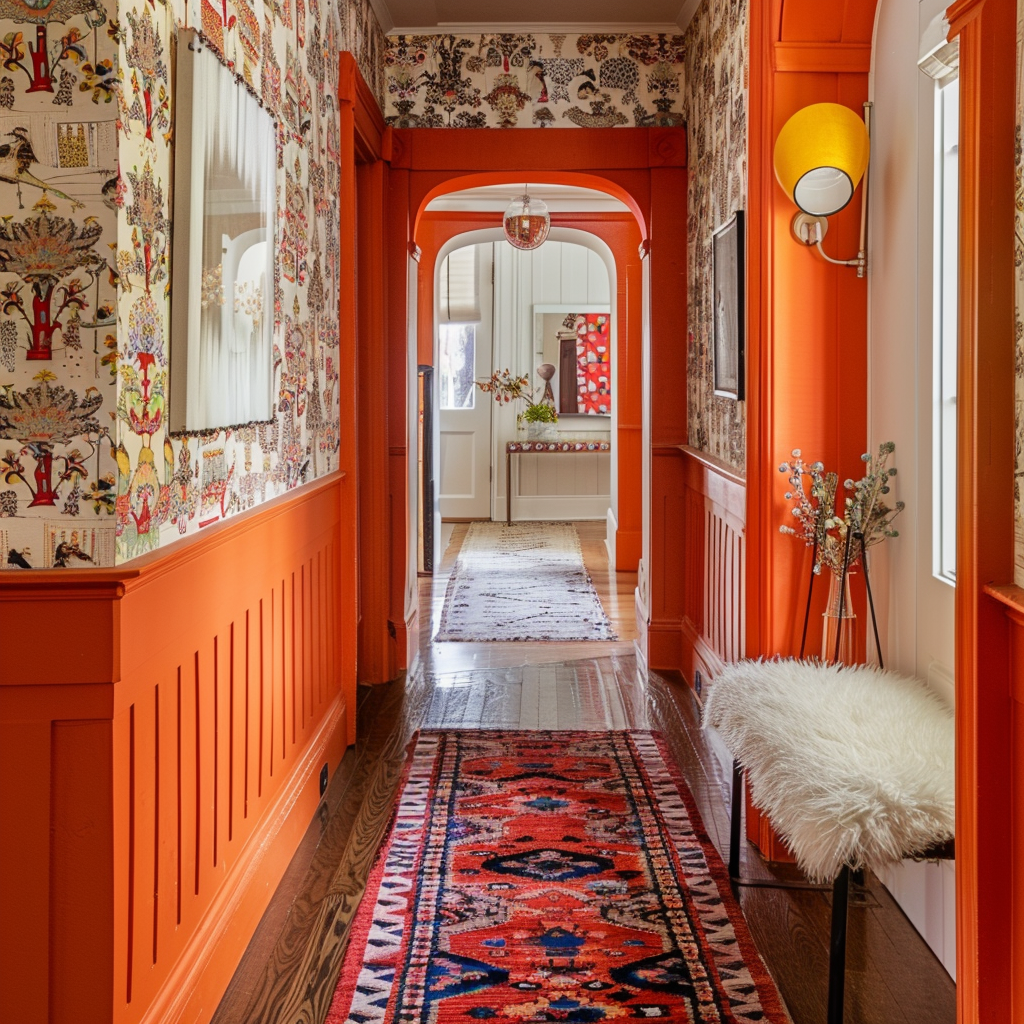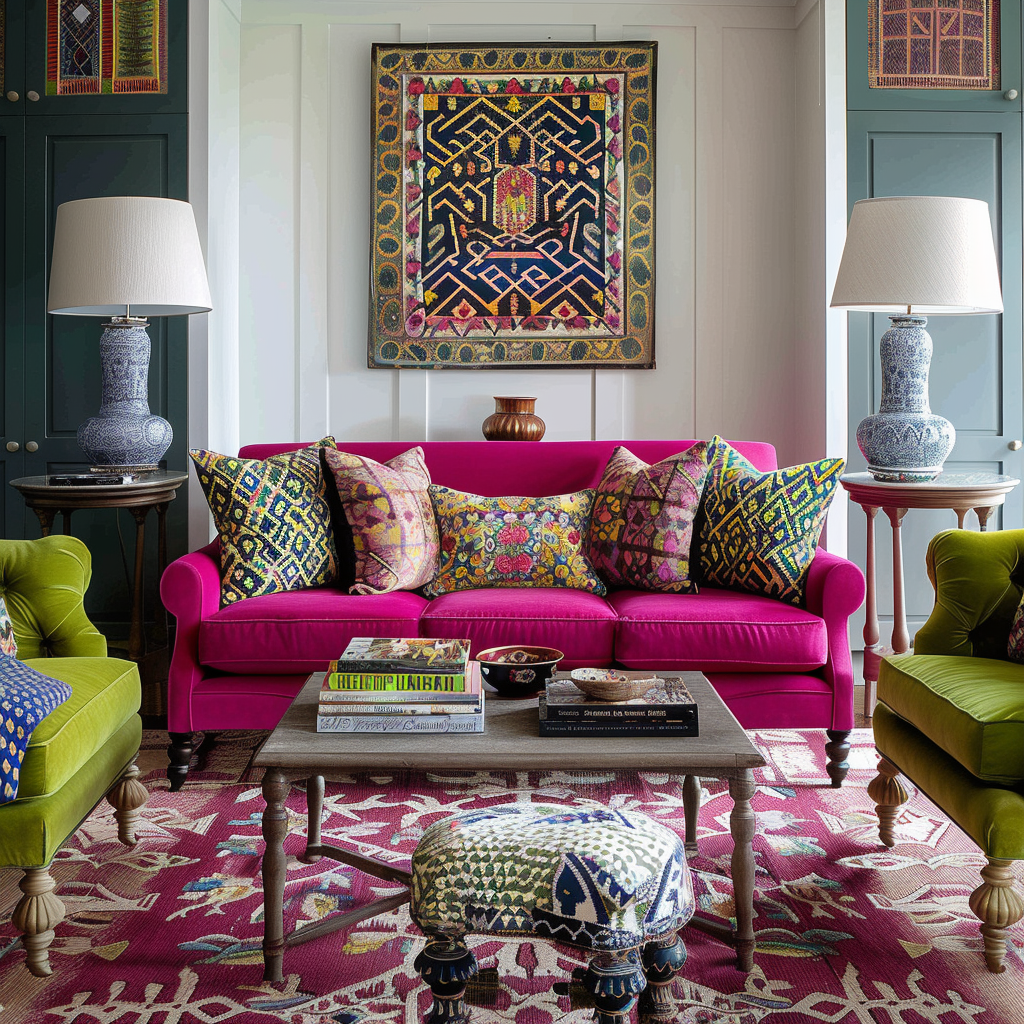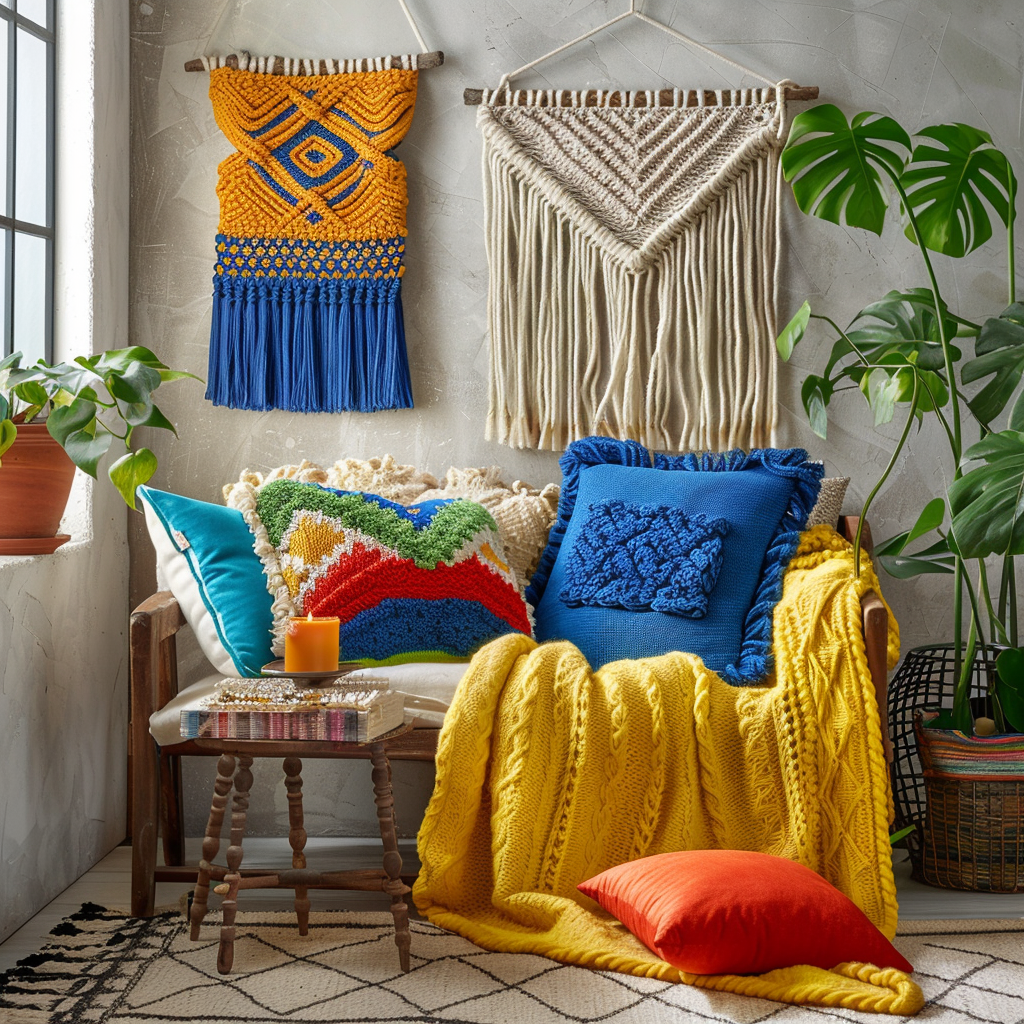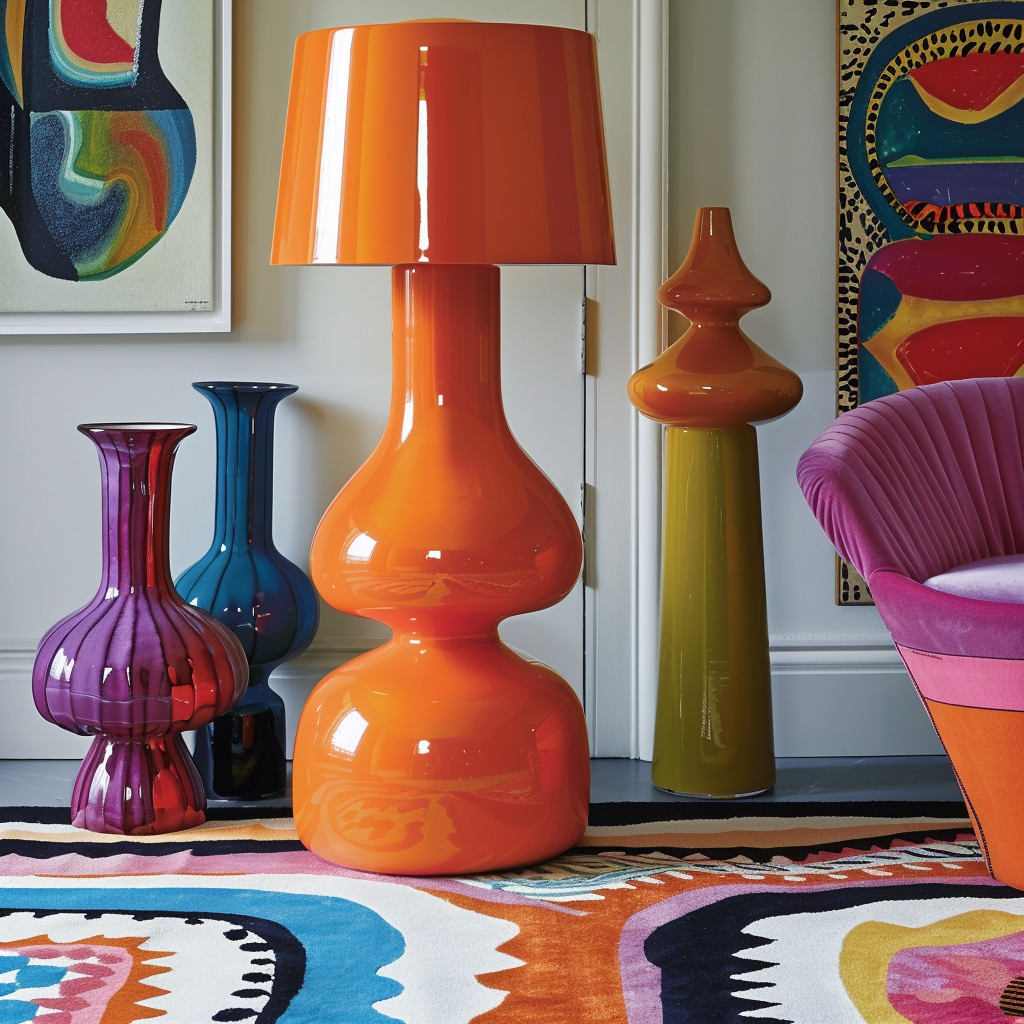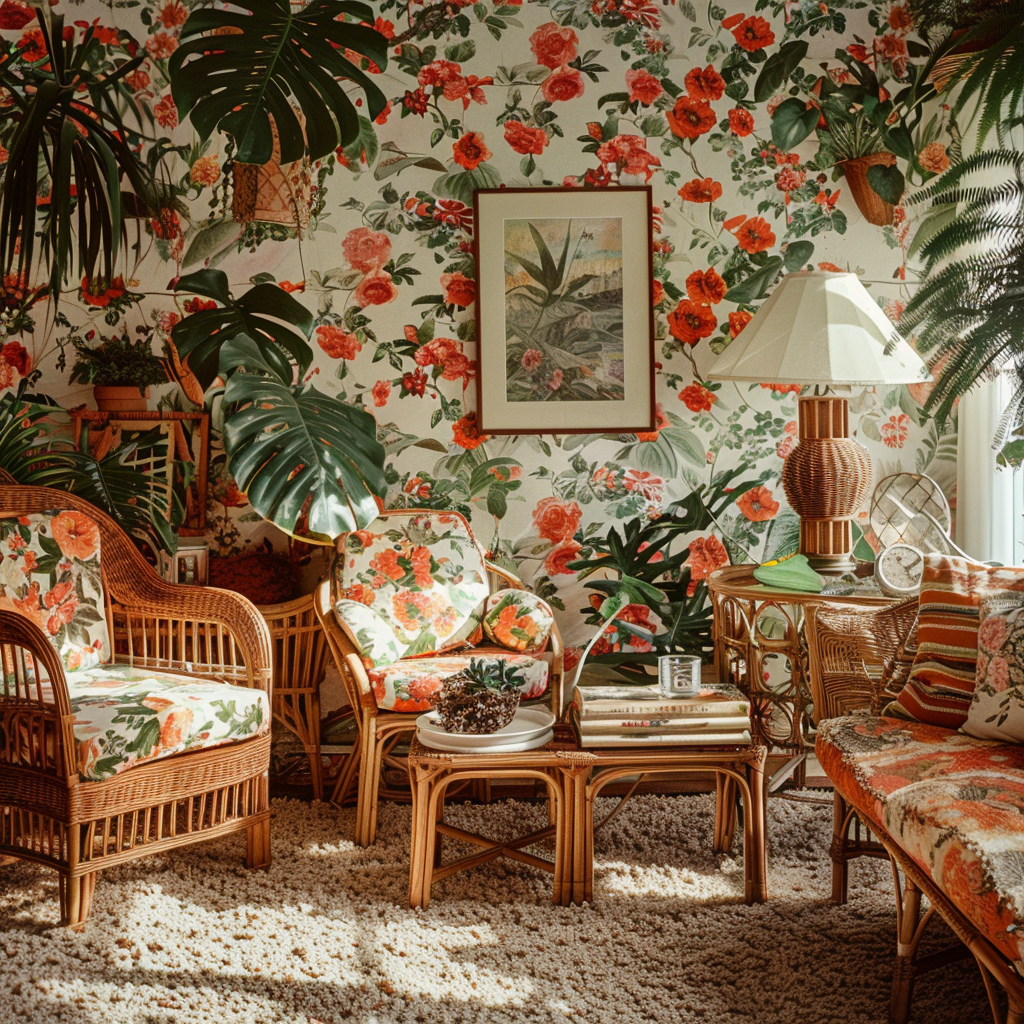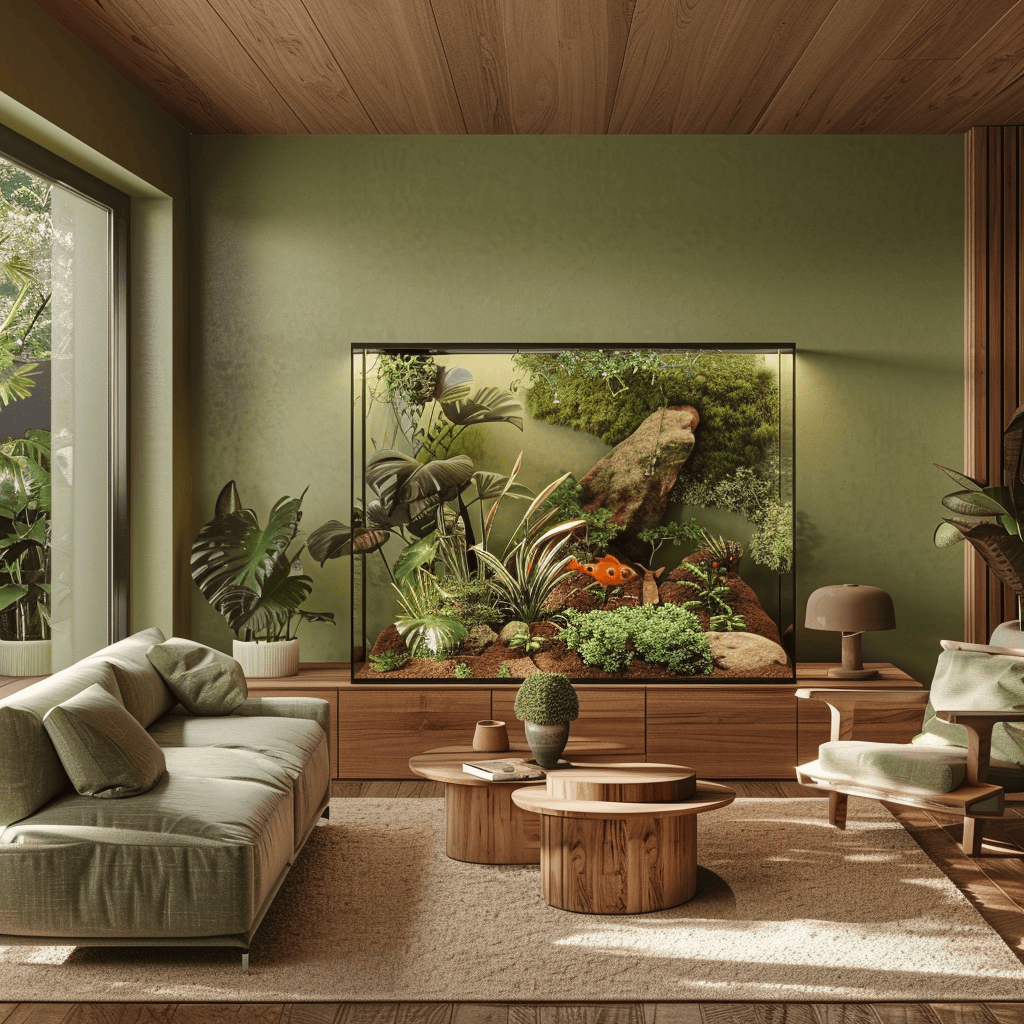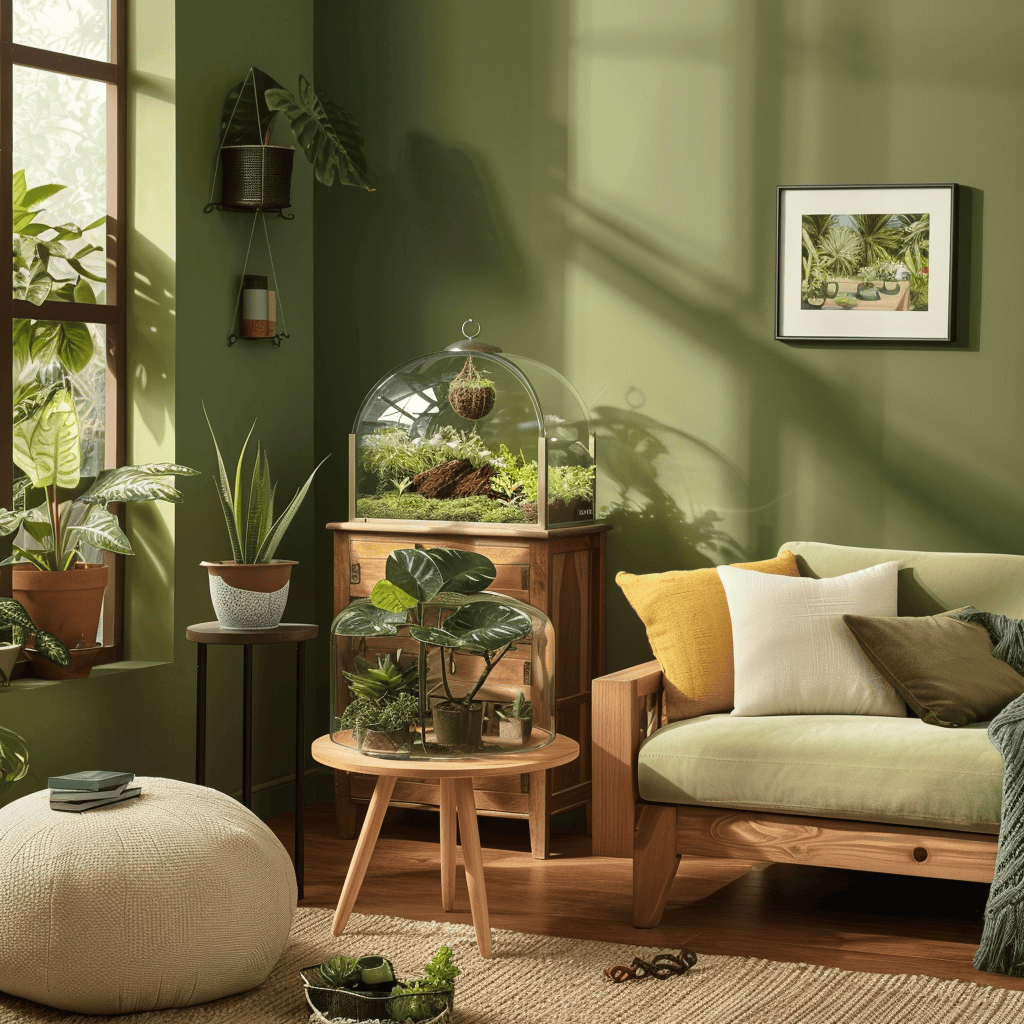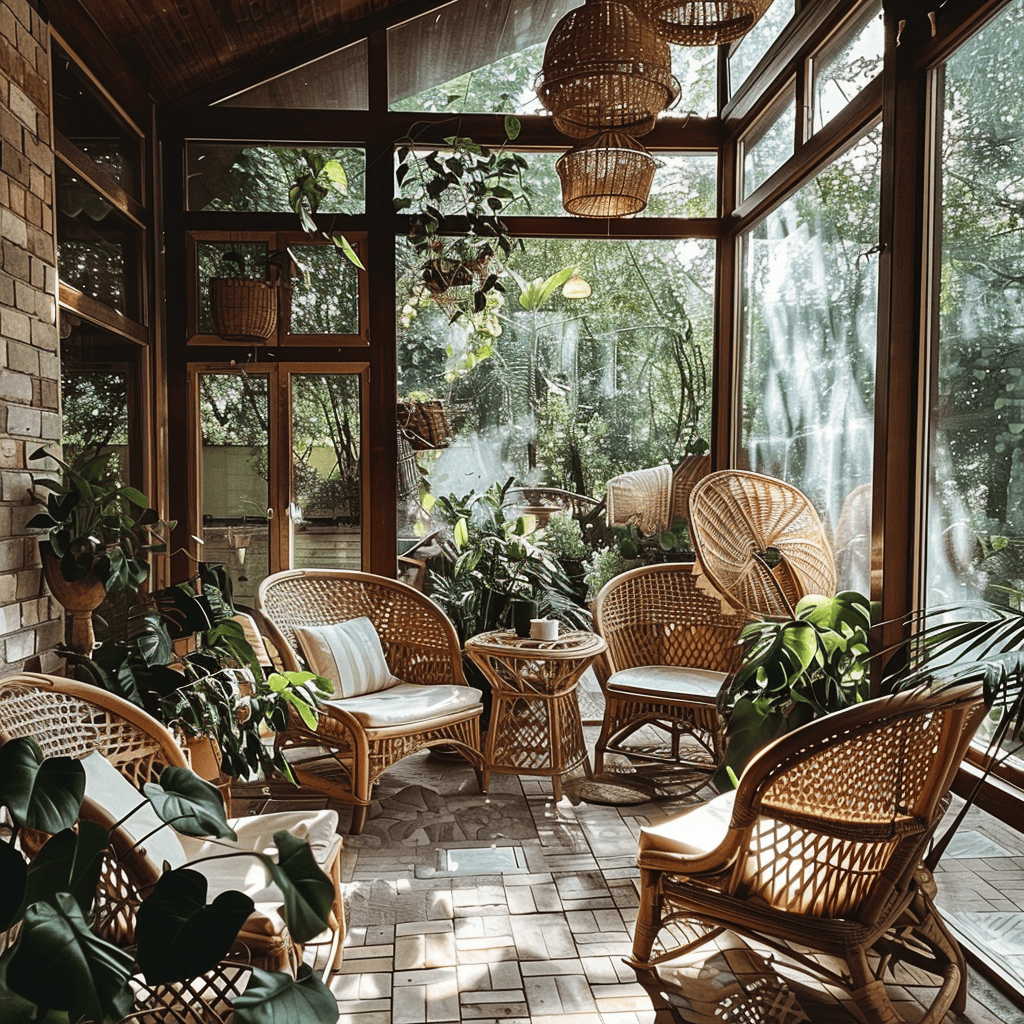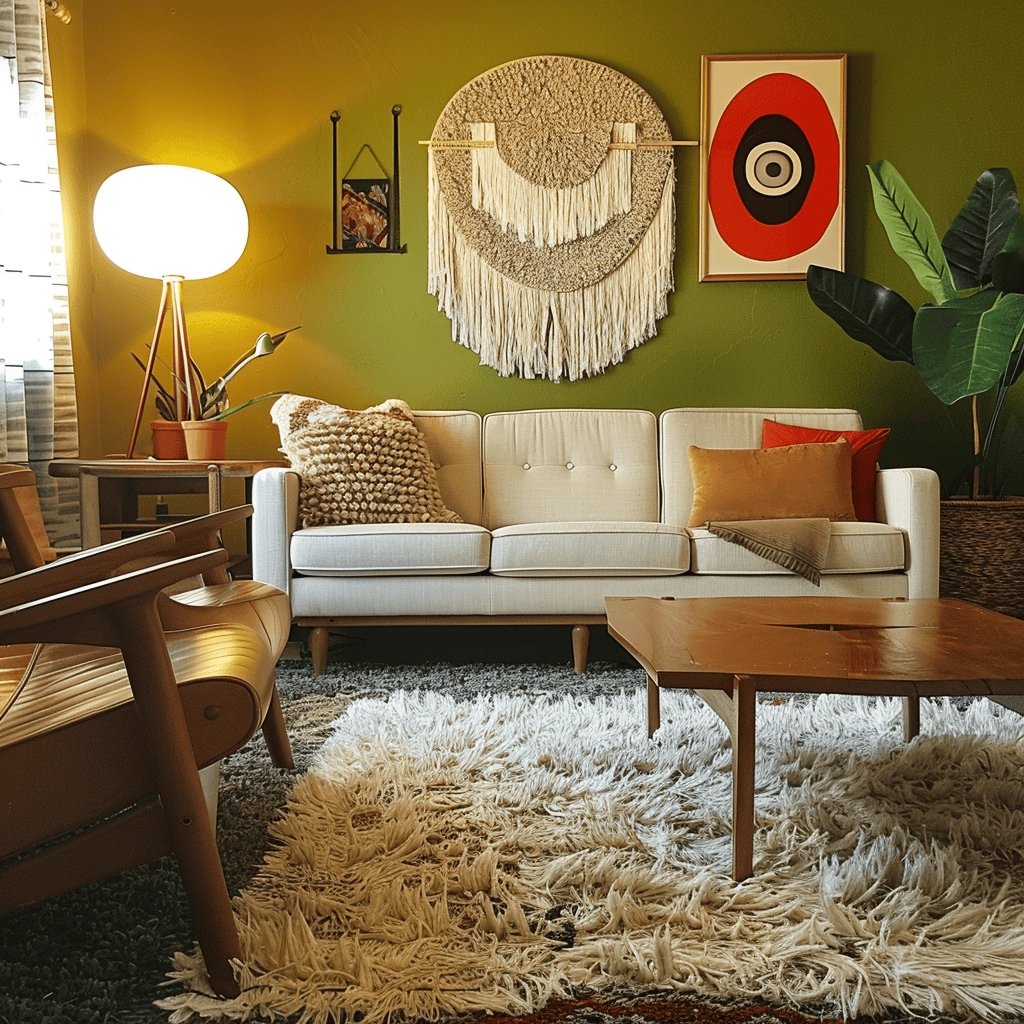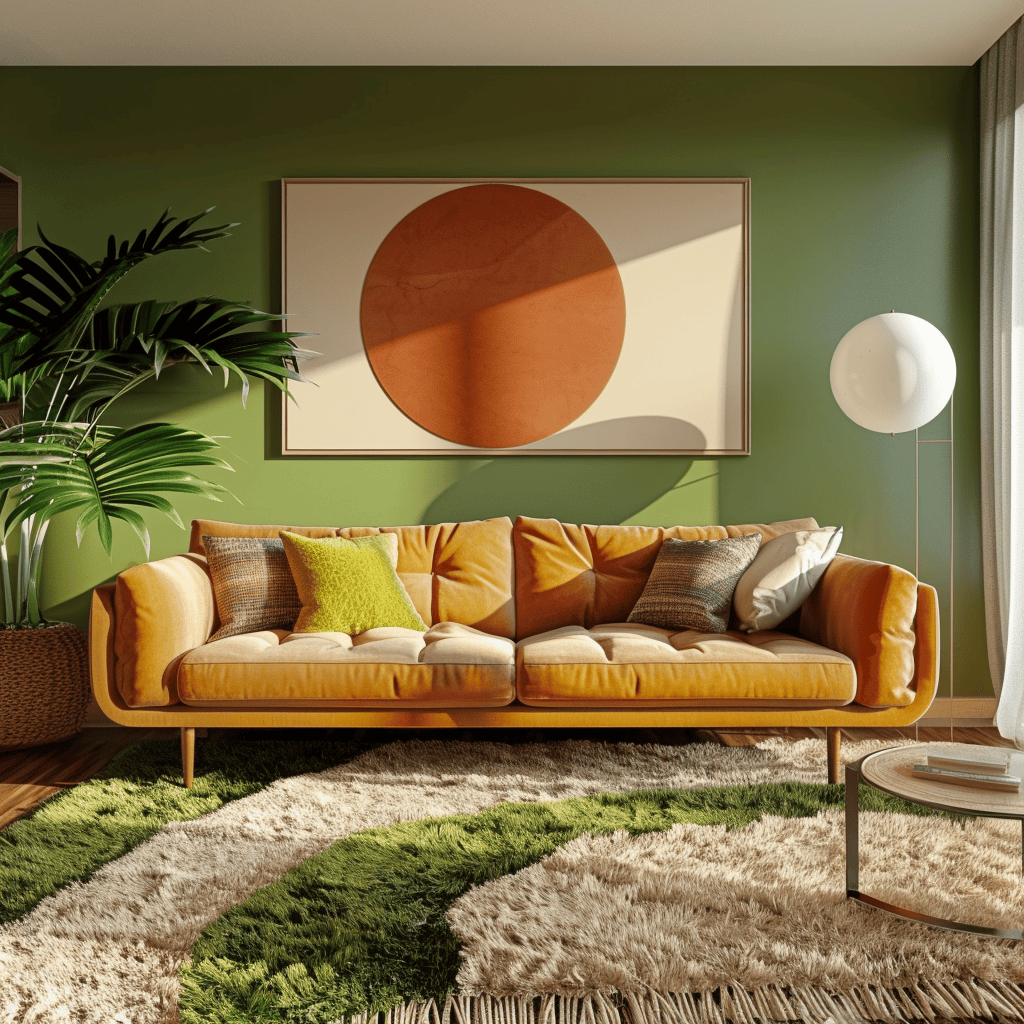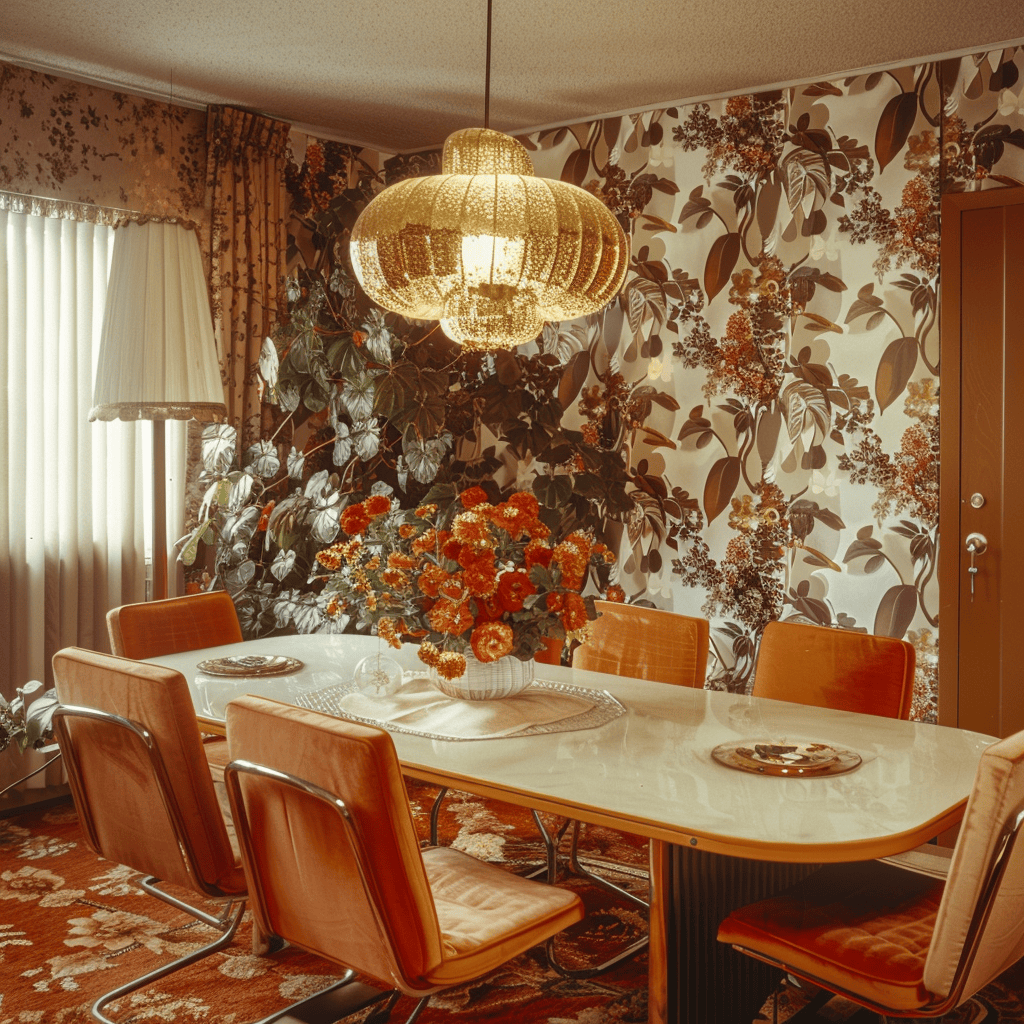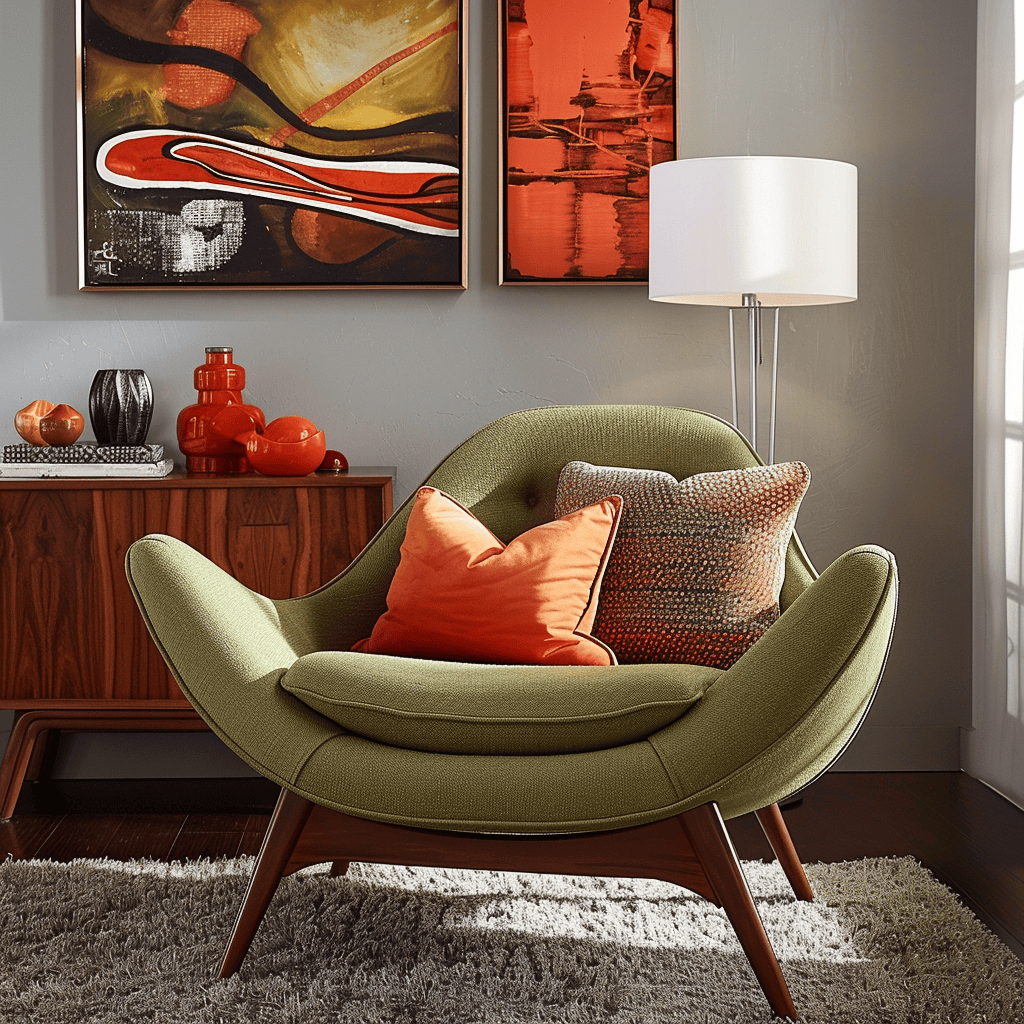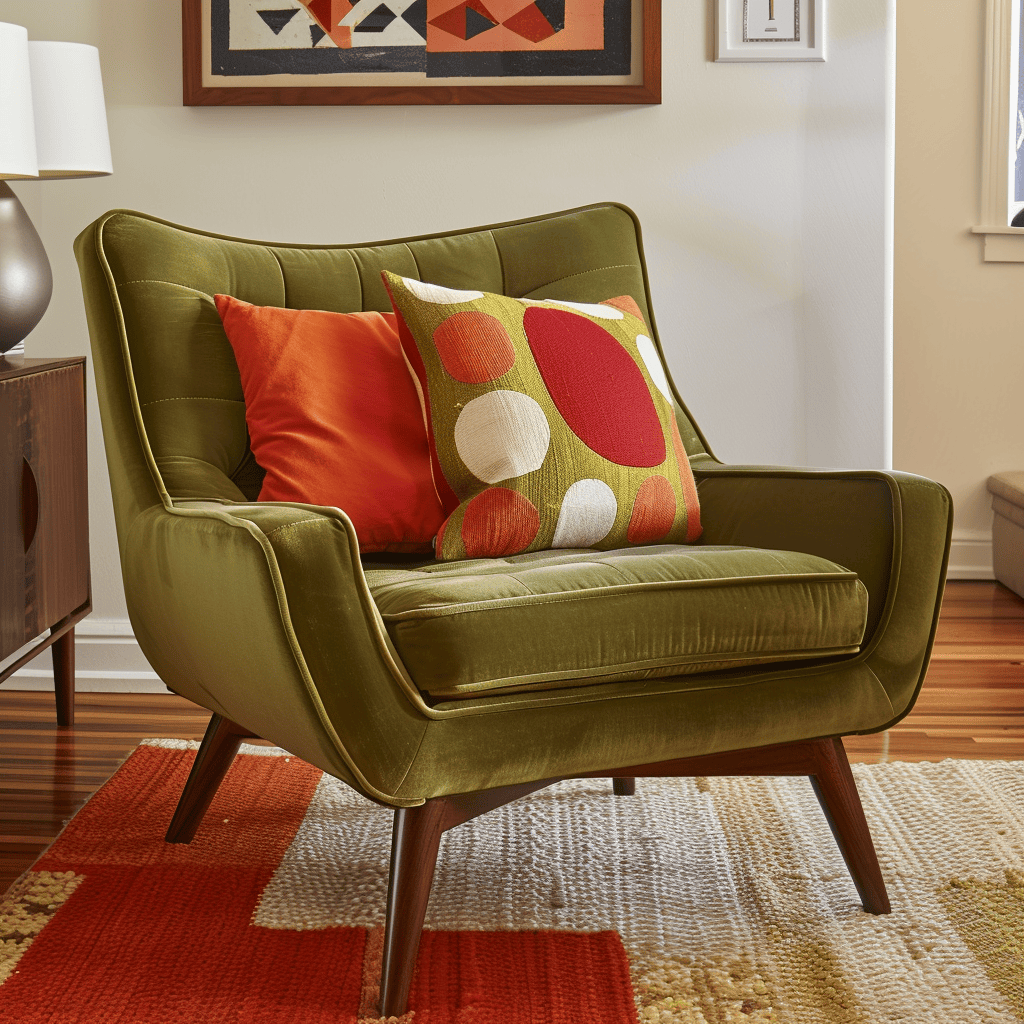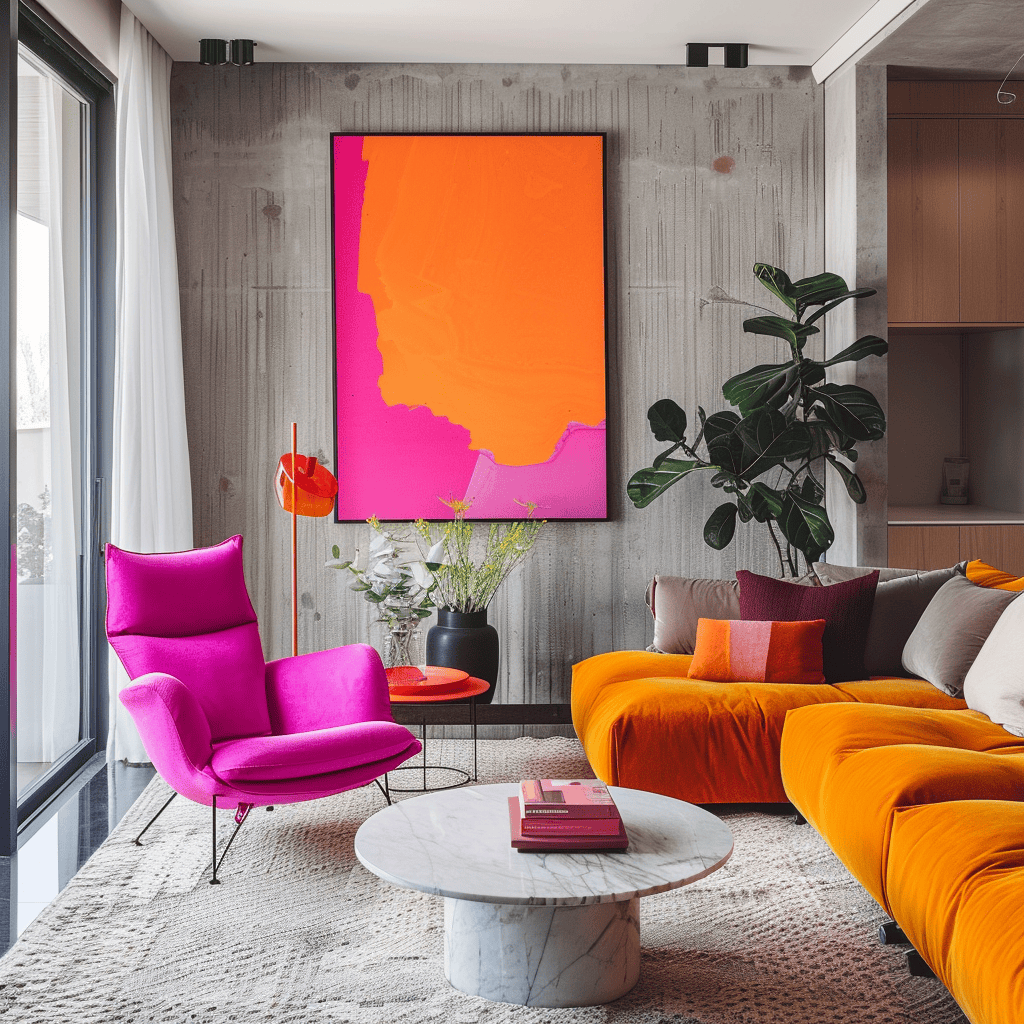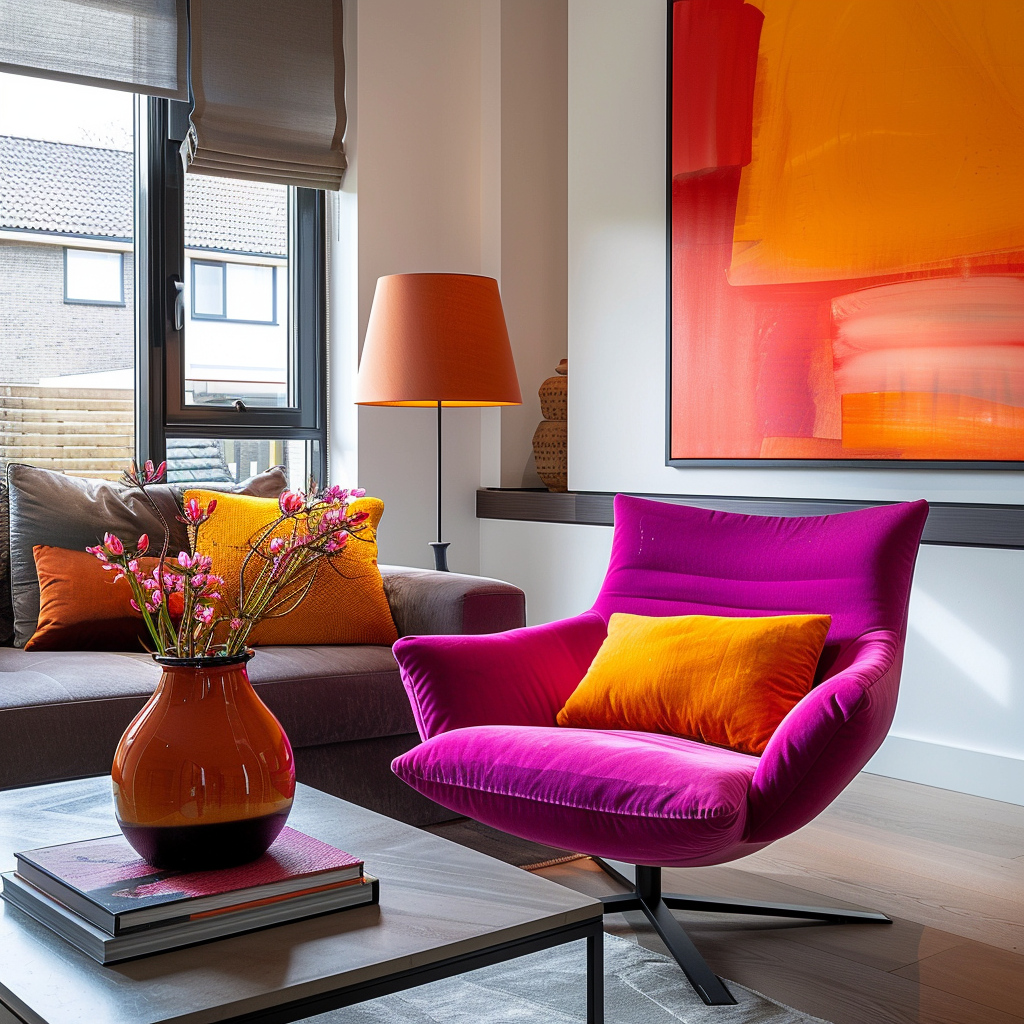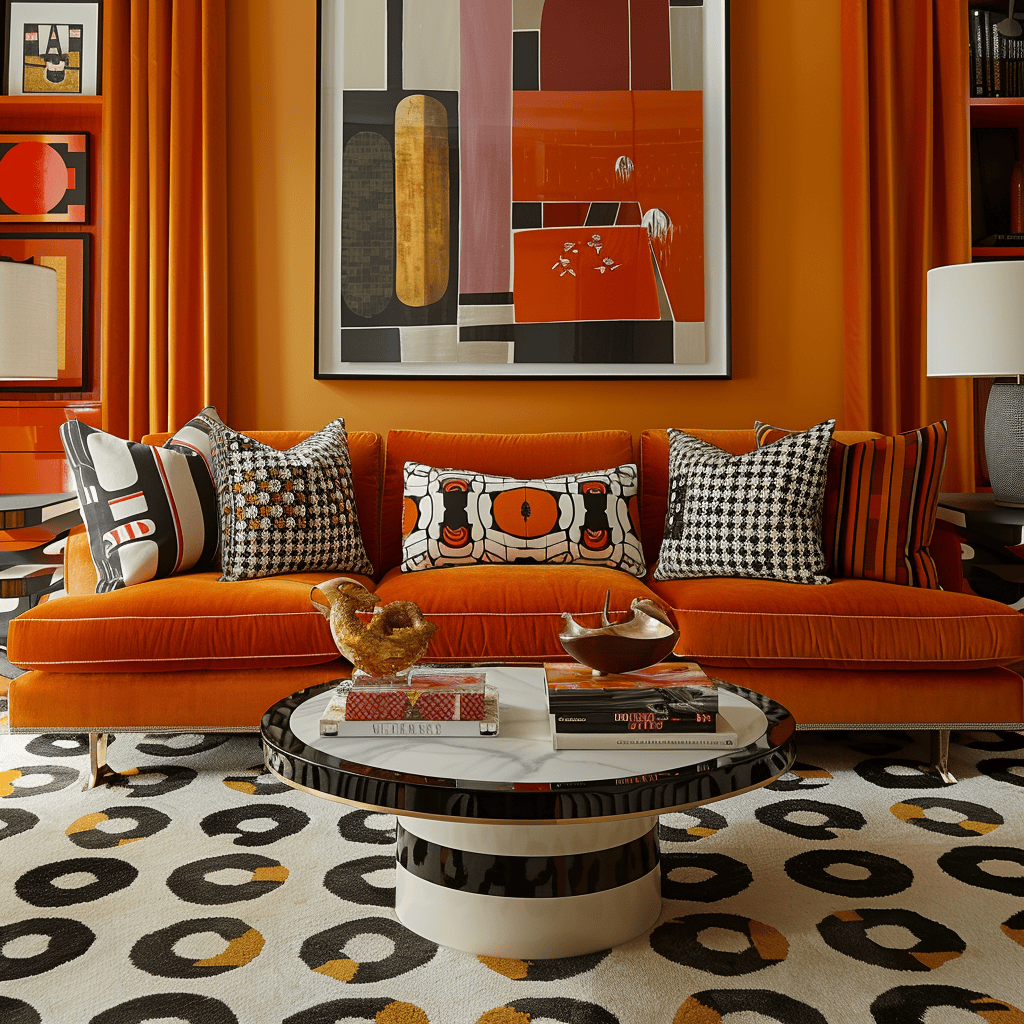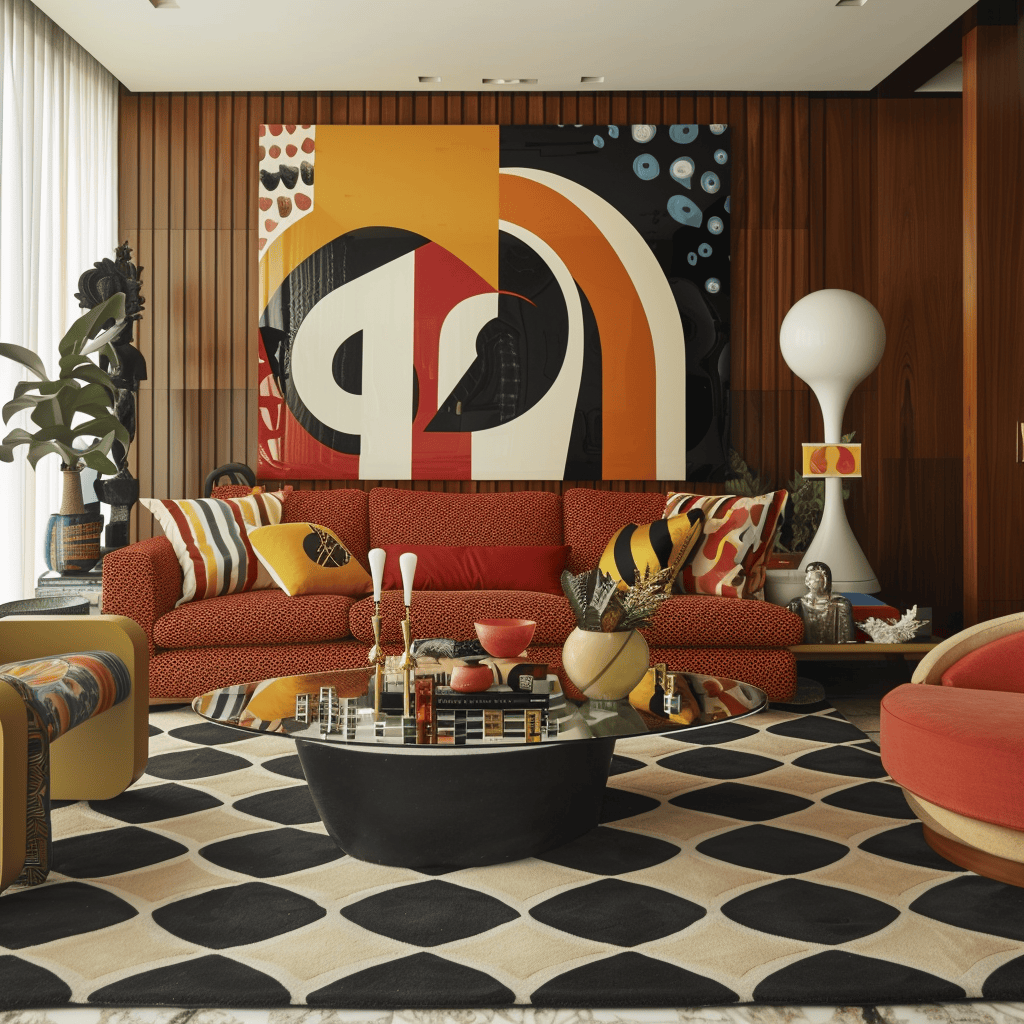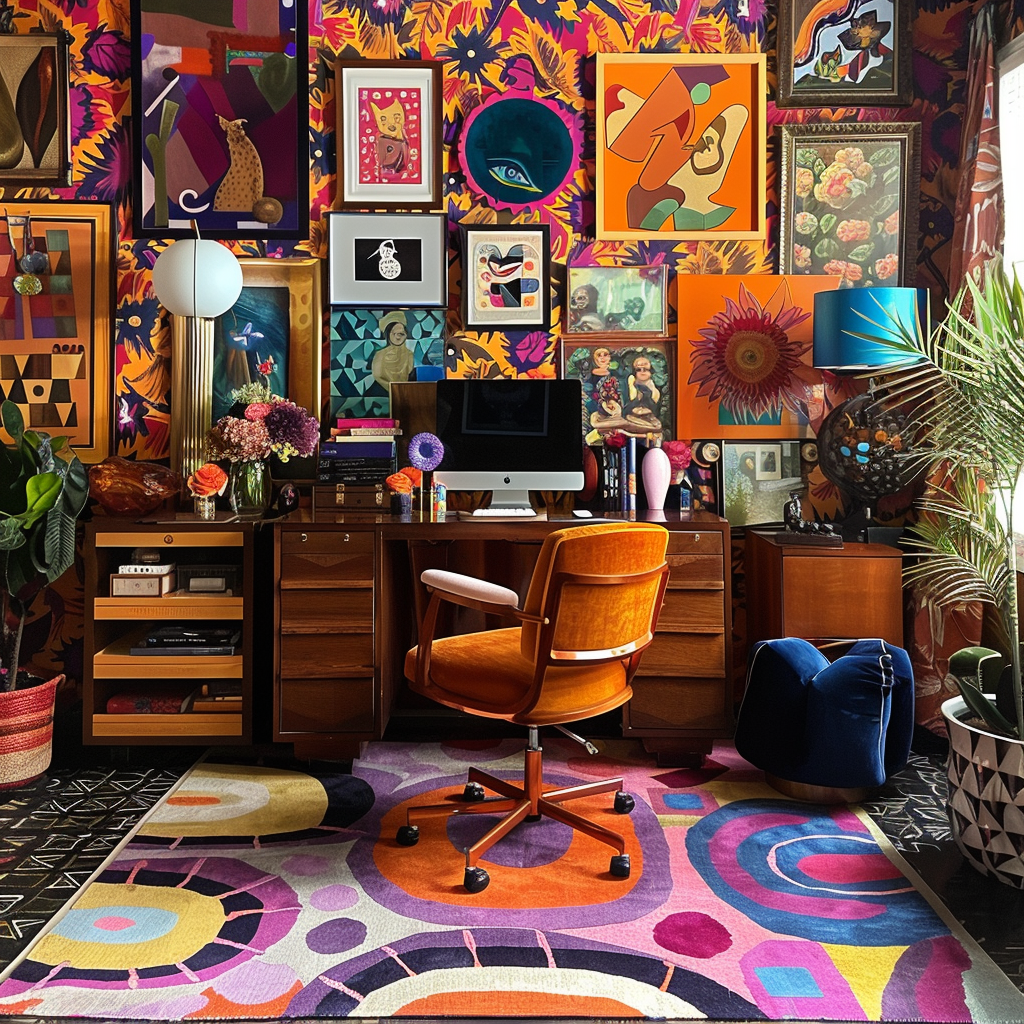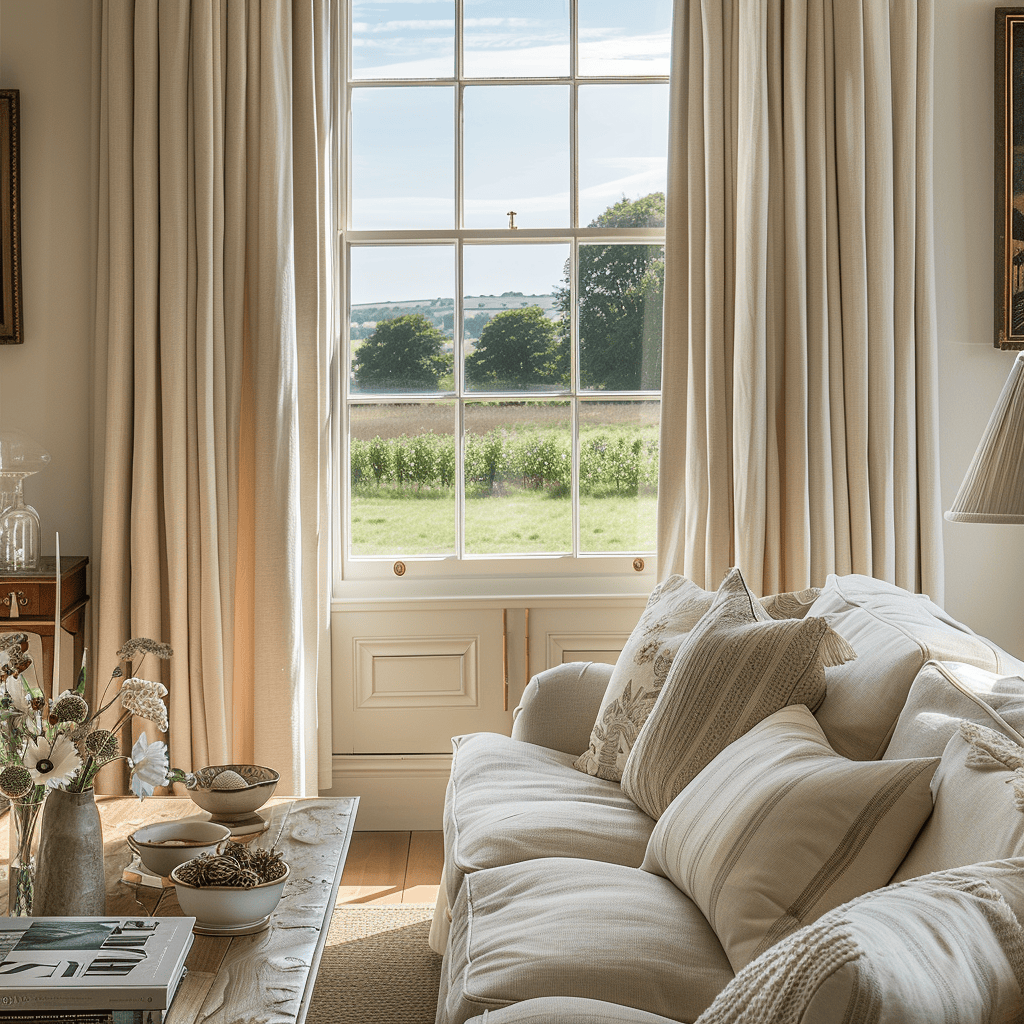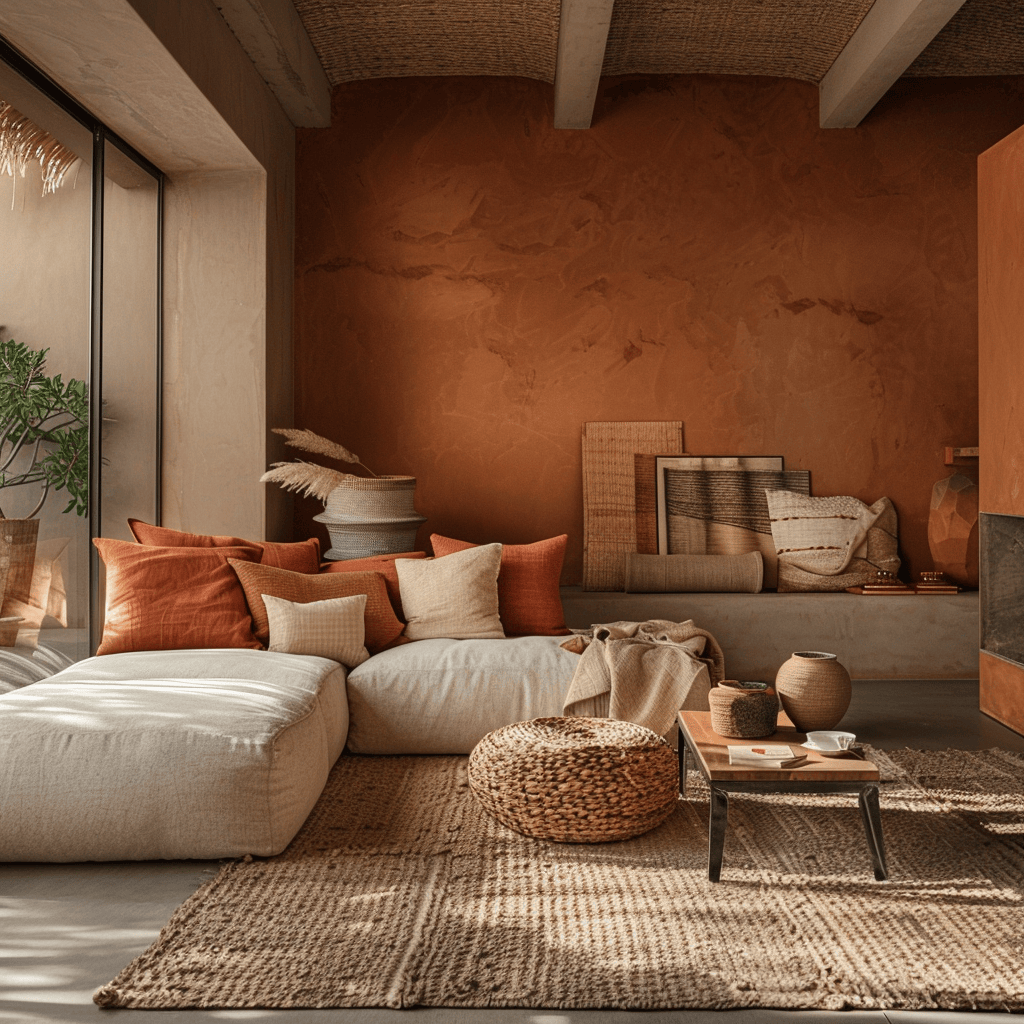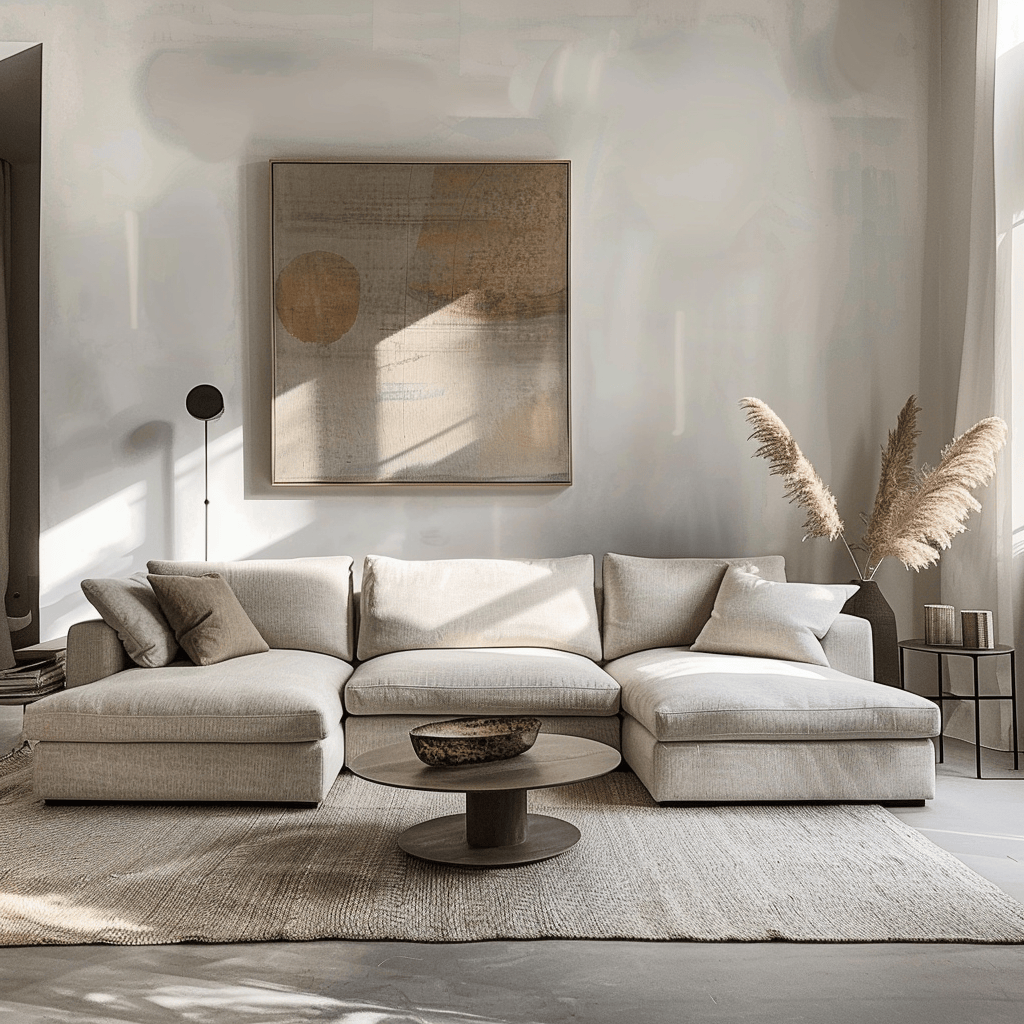Unlock The Bold and Groovy Colors of the 1970s - A Modern Approach
By Alan George
The 1970s was a time of cultural revolution, and this spirit of liberation and self expression was reflected in the vibrant, daring color choices of the era. From the earthy tones of the early 70s to the electrifying hues of the late 70s, the decade was a kaleidoscope of color that challenged conventional norms and embraced individuality. The 1970s palette is known for its distinctive mix of earth tones, vibrant hues, and pastels, reflecting the era's penchant for both natural motifs and bold, expressive design. Here’s a breakdown of the colors from the 1970s.

1/52
Warm and Earthy Tones
As the 1970s dawned, warm and earthy tones like harvest gold and avocado green dominated interior spaces, bringing the outdoors in and creating a cozy, grounded ambiance. Complemented by sunny oranges and rustic browns, these organic hues evoked a sense of rustic charm and bohemian flair.
Harvest Gold and Avocado Green
As the 1970s dawned, warm and earthy tones like harvest gold and avocado green dominated interior spaces. These organic hues were inspired by the growing environmental consciousness of the time, bringing the outdoors in and creating a cozy, grounded ambiance. Paired with natural materials like wood and wicker, these colors evoked a sense of rustic charm and bohemian flair.
Living Room
Harvest gold and avocado green were popular choices for living room walls, furniture upholstery, and accents like throw pillows and rugs.
Bedroom
These earthy tones created a warm and cozy atmosphere in the bedroom, often used for bedding, curtains, and even painted on the walls or ceilings.
Sunny Oranges and Rustic Browns
Complementing the earthy tones were sunny oranges and rustic browns, reminiscent of terracotta and spice markets. These warm, inviting shades added depth and richness to living spaces, creating a cozy and welcoming atmosphere. When combined with shag carpeting and macramé accents, these colors epitomized the laid-back, casual vibe of the early 70s.
Hallway
Sunny oranges and rustic browns were often used in hallways, either as accent walls or in the form of patterned wallpaper or runners.
Vivid and Vibrant Hues
As the decade progressed, interior design embraced a bold and daring color palette, with vivid hues like tangerine tango, dazzling fuchsia, electric blues, and citrus limes taking center stage. These high energy colors reflected the spirit of the times, adding excitement and youthful energy to living spaces.
Tangerine Tango and Dazzling Fuchsia
As the decade progressed, interior design embraced a bold and daring color palette, with vivid hues like tangerine tango and dazzling fuchsia taking center stage. These electric, high-energy colors reflected the spirit of the times, challenging conformity and celebrating self-expression. Paired with geometric patterns and sleek, modern furnishings, these vibrant shades brought a sense of excitement and energy to living spaces.
Living Room
Tangerine tango and fuchsia were popular choices for statement pieces like sofas or accent walls in the living room, creating a vibrant and energetic atmosphere.
Electric Blues and Citrus Limes
Equally captivating were the electric blues and citrus limes that burst onto the scene. These cool, refreshing hues evoked a sense of optimism and vibrancy, perfectly complementing the era's fascination with futuristic design and space-age aesthetics. Whether used as accent colors or bold focal points, these vivid shades added a playful and youthful energy to interiors.
Retro Metallics and Neutrals
No 1970s color palette would be complete without the inclusion of retro metallics like shimmering golds and bronzes, which added a touch of opulence and glamour. Creamy whites and moody grays provided a neutral backdrop, allowing the more daring shades to take center stage while creating balance and harmony.
Shimmering Golds and Bronzes
No 1970s color palette would be complete without the inclusion of retro metallics like shimmering golds and bronzes. These luxurious, glamorous hues added a touch of opulence and sophistication to living spaces, reflecting the era's fascination with all things glitzy and glamorous. Whether used on light fixtures, accent walls, or decorative accents, these metallic shades brought a sense of warmth and richness to interiors.
Dining Room
Shimmering golds and bronzes were often incorporated into dining rooms through metallic accents like chandeliers, mirrors, or even wallpaper with metallic embellishments.
Creamy Whites and Moody Grays
Providing a neutral backdrop for the bold and vibrant colors of the 70s were creamy whites and moody grays. These versatile hues allowed the more daring shades to take center stage while creating a sense of balance and harmony. Paired with rich textures like velvet and suede, these neutrals added depth and sophistication to living spaces, ensuring that even the boldest color combinations remained cohesive and visually appealing.
Kitchen
Creamy whites and moody grays were popular choices for kitchen cabinets, countertops, and appliances, providing a neutral base for pops of color in the form of backsplashes, window treatments, or decorative accents.
Color Combinations and Palettes
The 1970s was defined by fearless color combinations, from complementary contrasts to monochromatic moments and triadic harmonies. These bold palettes reflected the era's embrace of individuality and self expression, adding depth and complexity to interior spaces.
Complementary Contrasts
One of the defining characteristics of 1970s color schemes was the fearless use of complementary contrasts. Bold oranges were paired with electric blues, while vivid fuchsias were balanced by zesty limes. These contrasting combinations created a sense of energy and vibrancy, reflecting the era's embrace of individuality and self-expression.
Living Room
Complementary color contrasts were often used in living rooms, with vibrant orange sofas paired with blue accent walls or fuchsia throw pillows.
Monochromatic Moments
While bold contrasts were popular, the 1970s also saw the rise of monochromatic color schemes, where varying shades and tones of a single hue were used together. These harmonious palettes, often featuring earthy tones or vivid hues, created a sense of cohesion and depth within a space, allowing textures and patterns to take center stage.
Bedroom
Monochromatic color schemes were commonly used in bedrooms, with varying shades of green or brown creating a serene and cohesive environment.
Triadic Harmonies
For those seeking a more balanced approach, triadic harmonies were a popular choice. These color schemes featured three hues spaced evenly around the color wheel, creating a visually pleasing and harmonious combination. Earthy greens, warm oranges, and rich browns, or vibrant purples, electric blues, and sunny yellows were common triadic palettes that added depth and complexity to interiors.
Dining Room
Triadic color harmonies were often used in dining rooms, with combinations like avocado green, terracotta orange, and deep brown creating a warm and inviting atmosphere.
|
May We Suggest |
Decorating with 1970s Colors
Embracing the bold and groovy colors of the 1970s was as simple as painting walls and woodwork in vibrant hues, incorporating colorful upholstery and textiles, or adding pops of color through accessories and accents. These bold choices added instant personality and character to living spaces.
Painting Walls and Woodwork
One of the easiest ways to embrace the bold and groovy colors of the 1970s was through paint. Vibrant accent walls, painted woodwork, and even ceilings were popular canvases for showcasing the era's daring hues. From tangerine tango to electric blue, these bold color choices added instant personality and character to living spaces.
Hallway
Painted woodwork, like door frames and baseboards, in earthy tones or sunny oranges, added warmth and character to hallways.
Upholstery and Textiles
Textiles and upholstery were another prime canvas for 1970s color expression. Sofas, chairs, and bedding featured bold patterns and vibrant hues like harvest gold, avocado green, and dazzling fuchsia. These colorful textiles not only added visual interest but also reflected the era's embrace of self-expression and individuality.
Living Room
Vibrant upholstered furniture, like sofas and chairs in shades like fuchsia or electric blue, made a bold statement in living rooms.
Bedroom
Bedding and curtains in earthy tones or vivid hues like citrus lime brought the 1970s color palette into the bedroom.
Accessories and Accents
For those seeking a more subtle approach, accessories and accents provided the perfect opportunity to incorporate 1970s colors. Vibrant throw pillows, colorful lamps, and patterned rugs added pops of color and personality to living spaces without overwhelming the overall design. These accents also allowed for easy updates and changes, making it simple to experiment with different color combinations and trends.
Living Room
Throw pillows in bold patterns or vivid hues, paired with colorful lamps or rugs, introduced 1970s colors into living rooms without major renovations.
Bedroom
Patterned rugs or colorful decorative accents like vases or artwork brought 1970s vibes into the bedroom.
Embracing the Groovy Style
Beyond just color, the 1970s aesthetic celebrated bold patterns, rich textures, and a harmonious blend of indoor and outdoor elements. This groovy style embraced individuality and encouraged mixing and matching different eras and styles, resulting in unique and personal living spaces.
Incorporating Patterns and Textures
The 1970s was a decade that celebrated bold patterns and rich textures, and these elements were often used in conjunction with the era's vibrant color palette. Geometric patterns, floral prints, and psychedelic swirls were common motifs, while textures like shag carpeting, macramé, and suede added depth and visual interest to living spaces.
Living Room
Geometric patterned wallpaper or curtains, paired with shag rugs and suede accents, created a quintessential 1970s living room aesthetic.
Bringing the Outdoors In
In line with the growing environmental consciousness of the time, the 1970s saw a trend towards bringing the outdoors in. Earthy tones like harvest gold and avocado green were complemented by the use of natural materials like wood, wicker, and rattan. Indoor plants and terrariums were popular decorative elements, creating a sense of harmony between the indoor and outdoor spaces.
Living Room
Wicker and rattan furniture, along with indoor plants and terrariums, brought natural elements into 1970s living rooms.
Sunroom or Patio
Earthy tones and natural materials like wood and wicker were commonly used in sunrooms or outdoor living spaces, blurring the lines between indoors and outdoors.
Mixing and Matching Eras
While the 1970s had its own distinct aesthetic, the decade also embraced a spirit of eclecticism, where different eras and styles were combined to create unique and personal living spaces. Vintage pieces from the 1950s or 1960s were often paired with contemporary 1970s elements, resulting in a layered and dynamic design that reflected the individuality of the homeowner.
Living Room
A 1960s mid-century modern sofa paired with a 1970s shag rug and avocado green accent wall created an eclectic and personalized living room aesthetic.
Dining Room
A vintage dining table combined with 1970s metallic accents and a bold wallpaper pattern exemplified the era's eclectic style.
The Legacy of 1970s Colors
While rooted in a specific era, the bold and vibrant colors of the 1970s have experienced a resurgence in recent years, with retro revivals and contemporary interpretations alike. The decade's spirit of self-expression and individuality continues to influence interior design trends, paving the way for a more vibrant and expressive approach.
Resurgence and Retro Revivals
In recent years, the bold and vibrant colors of the 1970s have experienced a resurgence, with retro revivals and nostalgic nods to the era appearing in fashion, interior design, and pop culture. From the return of harvest gold and avocado green to the enduring popularity of electric blues and tangerine tango, these iconic hues have proven to be timeless and enduring.
Living Room
Contemporary living rooms have embraced retro revivals with avocado green accent chairs or tangerine tango throw pillows as nods to the 1970s.
Contemporary Interpretations
While the 1970s color palette may be rooted in a specific era, contemporary designers have embraced these hues with fresh and modern interpretations. Vivid fuchsias and sunny oranges are paired with sleek, minimalist furnishings, while earthy tones are combined with industrial elements and clean lines, creating a harmonious blend of vintage and contemporary aesthetics.
Living Room
Fuchsia accent chairs or sunny orange rugs have been paired with modern, minimalist furniture for a contemporary take on 1970s colors.
Bedroom
Earthy tones like avocado green have been incorporated into bedrooms with industrial inspired metal accents and clean lines, creating a fresh and modern aesthetic.
Enduring Influences
Beyond the direct use of 1970s colors, the decade's spirit of self-expression and individuality continues to influence interior design trends. The willingness to embrace bold, daring hues and the fearless combination of colors and patterns has paved the way for a more vibrant and expressive approach to interior design, where personal style and creativity take precedence over rigid rules and conventions.
Living Room
Contemporary living rooms often feature bold color combinations and pattern mixing, reflecting the 1970s spirit of self-expression and individuality.
Home Office
Homeowners have embraced vibrant and daring color choices in home offices, creating energetic and inspiring workspaces that celebrate personal style.
Whether embracing the bold and groovy colors of the 1970s in their purest form or incorporating contemporary interpretations, this decade's color palette remains a captivating and enduring source of inspiration for interior designers and homeowners alike.

